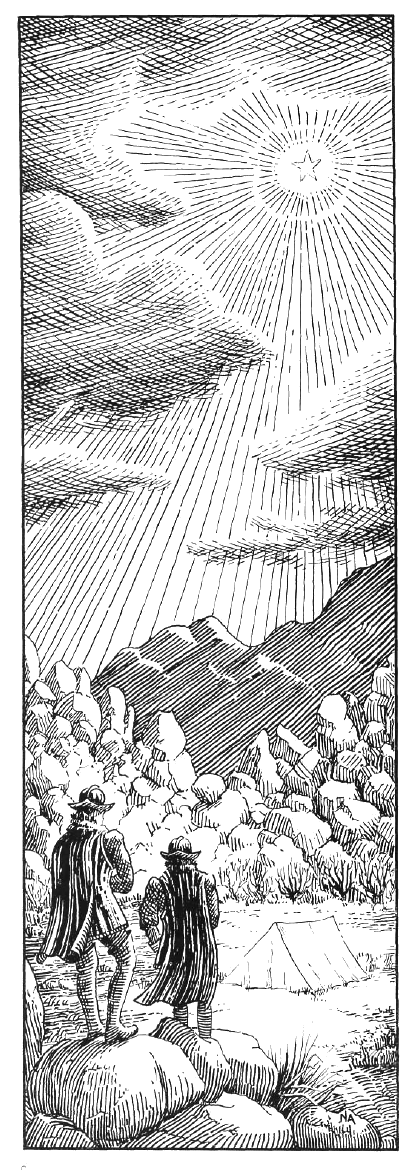



















































































































































 ... and Stories Through the Decades — 1 |

Hey all of you desert lovers!
All of the issues of Desert Magazine, starting with 1937, are now online for you viewing pleasure.
Many thanks to Rocko for making this wonderful magazine available to all of us desert rats once again.

Click here for Desert Magazine on Facebook
 All of the articles in this section have been gleaned from the annals of the San Francisco Call newspaper |
|||
1890 August |
THE INYO INDIAN MURDER Further Details of the Killing of Frank Paderes Jack Gunn is the name of the Indian who murdered Frank Paderes at Crystal Springs, Inyo County, July 28th. Before murdering Paderes, Gunn had killed an Indian with a club and was aboiut to beat another to death. Paderes urged Gunn to desist. Gunn then went to his wickiup and returning to where Paderes was sitting in front of his cabin, took deliberate aim and shot Paderes through the body, the woiund proving fatal a few hours later. Gunn then proceeded to load his weapon again, an old-fashioned rifle, and Francisco Olivas, who was within speaking distance, but wholly unarmed, called to him, asking him what he meant to do. The Indian replied that he was going to kill his questioner. Olivas dashed down the canyon in an instant and started for Darwin. He threw off his clothes as he went and when he got to the mouth of the canyon divested himself of every stich of clothing and rushed into Darwin stark naked. The murderous Indian had sixty miles start of the officers and a party of young men who are on his trail from Lone Pine. - Virginia Chronicle, August 5th |
||
1896 September |
|
||
1898 January |
LITTLE TOWN OF KEELER BURNING RENO, Jan. 8.— Keeler. on the south end of the Carson and Colorado Railroad, is being burned, and it is doubtful if any part of the town can be saved. It is a small place, and there is not much to burn. |
||
1900 March |
NEW TELEGRAPH LINE CARSON, Nev., March 3. - The Westen Union Telegraph Company has had a corps of engineers investingating the telegraph service of the Carson and Colorado Railroad, lately purchased by the Southern Pacific. They are making calculations on the necessary maerial for service between Mound House and Keeler and are also making arrangements for running wires from Keeler to Mojave. |
||
1904 August |
CLOUDBURSTS CAUSE DAMAGE IN NEVADA Washouts Sweep Away Railroad Tracks and Delay Trains on Several Lines. RENO, Nev., Aug. 15.— A big washout occurred yesterday afternoon twelve miles below here that has tied up all traffic. Forty-eight passengers were out all night on the desert on account of a delayed train. No lives were lost, but there has been heavy damage inflicted on the railroad and on other property. In and about Tonopah and Goldfield there have been heavy rains all week. The Tonopah Railroad has been a heavy sufferer, and so has the C. & C, which lost a big section of track at Keeler. For a mile and a half on this latter road the tracks were covered with water Saturday and Sunday. The damage is great there. The people in the valley at that point are almost terror stricken. |
||
1904 October |
|
||
1909 July |
TWO LABORERS BLOWN TO PIECES BY POWDER |
||
1910 October |
LAST SPIKE DRIVEN IN NEW S. P. LINE |
||
1910 December |
|
||
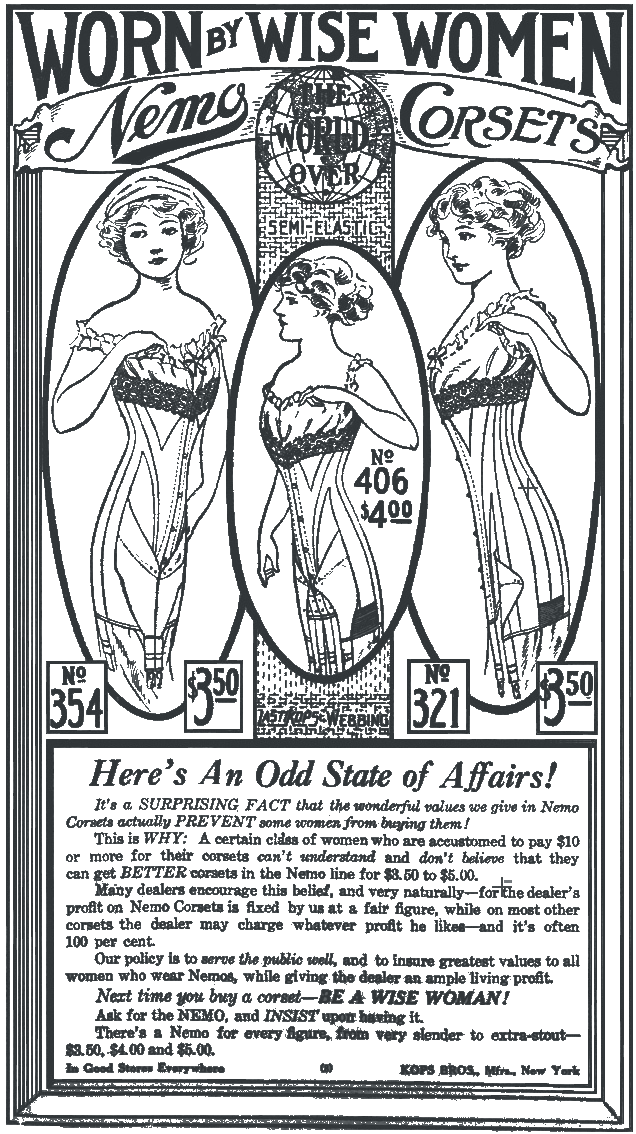
Jenkins' Woes
The San Francisco Call - April 3, 1894
Owens Valley News from an Assortment of Various Newspapers |
|||
1863 April |
The Santa Cruz SENTINEL THE OWENS RIVER INDIANS. - The Visalia Delta of April 9th says: From Owens river, we learn that troops were to start after the Indians again on Tuesday. The Copperhead allies of the latter, who live near the settlements on Kern River, are still stealing cattle to feed the warriors. Captain McLaughlin will "take them in" as he goes along. The Virginia Union of April 11th adds: The latest news from Owens River was that the Indians were still committing depredations, and the white settlers were fleeing for safety. Until the Indians can be drawn from their mouintain fastnesses, and a sever chastisement inflicted upon them, murders of whites will be of frequent occurrence. - The Indians say that the white man shall not settle in their country. |
||
1863 April |
The Plumas STANDARD The employes at the Union mills, on Owens River - twenty five in number - recently contributed and paid 4275 toward the fund for the relief of the sick and wounded soldiers. |
||
1863 June |
The Sonoma County JOURNAL At Owens River, Capt. McLaughlin lately distributed arms to the settlers, to defend themselves with. He required them all to take the oath of allegiance, before receiving them, remarking that he "would rather disarm rebels than arm them." |
||
1863 June |
The Santa Cruz SENTINEL LETTER FROM CAPTAIN BROWN A letter dated Ruby Valley, August 3rd, has been received by a friend of Captain Brown, who allows us to make the following extracts: "I have heard nothing of the death of James Hecox, except what you wrote. It is necessary for me to have official notice of it from the attending physician, in order that his friends or legal heirs may get what is due him from the Government. I believe the relatives of Asa Anthony never received his pay. It was with much surprise and sorrow that I heard of Hecox's death. He was a good soldier; patient, uncomplaining and always ready and reliable. I am not in very good condition for writing, having just returned from a scout among the Indians, disguised as an immigrant. My face is so swollen that my eyes are almost closed. A few days since, disguised in this manner, I succeeded in getting information which enabled me to find and take prisoner the leader of a band of Indians who murdered two families on the Humboldt last fall - thirteen persons in all - two men, two women and nine children. After the men were killed, the savages brutally outraged the females. The Indians that I caught kept one beautiful little girl, and mangled her body with a knife, to enable him to accomplish his purpose, and after keeping her in misery three days, killed her. This being fully proved, he was hanged, after confessing, and giving the names of the Indians engaged in the horrible affair. Unless ordered to some other part of the country soon, I will have every one of the miscreants. they are in this vicinity, and we are out every week after them. The Owens River trip was very successful. We did not kill many Indians, but kept them from water, and destroyed their food, so they were almost starved when they gave up, and came into camp. When I left Camp Independence about six hundred in all had come in. They have since been sent to Fort Tejon reservation. My men have not been paid for ten months, but the Paymaster is expected to arrive soon. I am to start tomorrow with twenty men to meet him at Reese River." |
||
1863 September |
 The Los Angeles Daily HERALD General McDowell orders another post establishment in the Owens River county, south of Camp Indpendence, for the protection of settlers from the Indians |
||
1865 July |
 The San Francisco Examiner INDIANS. - The Visalia Delta, July 12th says: The Union Mills, on Owens River, were burned by Indians on the 25th of last month. - About the same time the Indians entered Bend City, which is now deserted, and nearly demolished the place. We hear that they are stealing stock also in the valley. |
||
1870 September |
The San Francisco Examiner During the last three months, three hundred tons of freight was shipped hence to Owens River and other mines. The bullion receipts have been 9613 bars, weighing 423 tons. Forty-eight mule teams are employed in the trade. |
||
1871 January |
The San Francisco Examiner BORAX IN INYO. - The Inyo Independent of January 18th says: A large deposit of borax has been discovered at or near Fish slough, five or six miles from the bridge across Owens River in Bishop Creek precinct. The borax is found in beds, is highly impregnated with saltpetre, and, after having been tested at several blacksmith shops, is pronounced of the best quality. The claim is owned by Brockman, Ryan, Westerfield and others, and knocks the spots out of any similar borax operations at Clear Lake or in Esmeraldo. Mr. Ryan will go to San Francisco with some 5,000 pounds of the article shortly. |
||
1871 August |
The San Francisco Examiner Two careless horse thieves were caught and shot last week, between the Llano Verde and Willow Springs, on the Owens River road. |
||
1871 November |
|
||
1871 October |
The San Francisco Chronicle A cattle disease has broken ouit among the cattle and horses in the vicinity of Owens Lake and on the ranches on the Owens River road. Numbers have died. |
||
1872 February |
The San Francisco Examiner IN AND ABOUT PETROLIOPOLIS The Los Angeles News of January 21st gives this intelligence: From Sanford Lyon, late Postmaster at Petroliopolis, we learned that sheep, returning to their old pastures in this county from the mountains north, pass through the Soledad Canyon by the thousands daily. During the summer drought these flocks were compelled to seek grass upon the table-lands of the Sierra Nevadas. The ascent is made at Little Lake Station in the Owens River region. These table-lands contain thousands of acres of splendid pasturage, the grass growing a foot or more in height during the summer season. In the fall of that year they are compelled to descend to the valleys again on account of the extreme cold and the heavy fall of snow. All the mountain streams abound in fish and the woods are equally as prolific in game. The shepherds speak of these summer pasturages in the most extravagant terms of praise. The Owens River valley is also a favorite resort. The grass in and around Petroliopolis is said to be very short, attributable partly to this extraordinary migration of stock, and partly on account of frosty nights which have prevailed there since the last rainfall. The majority of the inhabitants of that section are engaged in sheep-farming, and are in high spirits over the bright prospects ahead for an ample supply of grass for their flocks and herds during the summer season. |
||
1874 May |
The Los Angeles Herald OWENS LAKE From the Tulare Times: Little is apparently known of this lake. It is ninety miles in length and fourteen miles wide, and its greatest depth of thirty feet. The bottom is apparently smooth and level. It is supplied by Owens River and numerous springs, and has no visible outlet. It is highly charged with alkali, borax and other elements, and is so strong that it will cut cloth, leather, destroy soap or grease. On the west side are the highest mountains in the United States: Mount Whitney being but a short distance off. Owens River flows from the north through a narrow valley, between two ranges, and enters the north end of the lake. Rugged, broken mountains rise upon the east. From the south extends a narrow, dry valley. The surrounding scenery is picturesque and grand. |
||
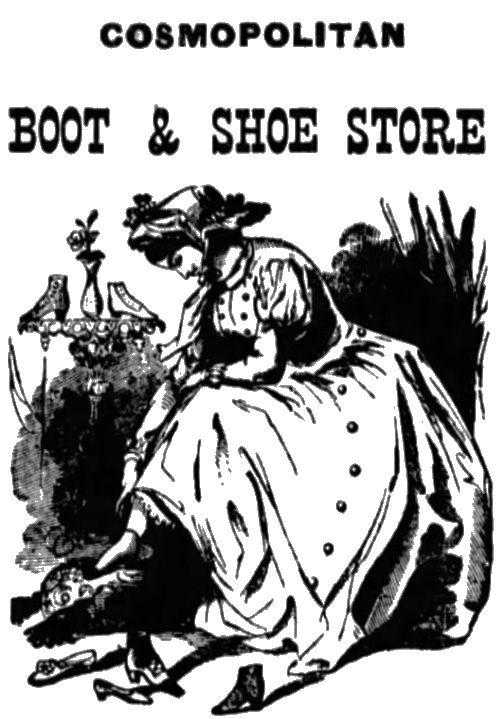
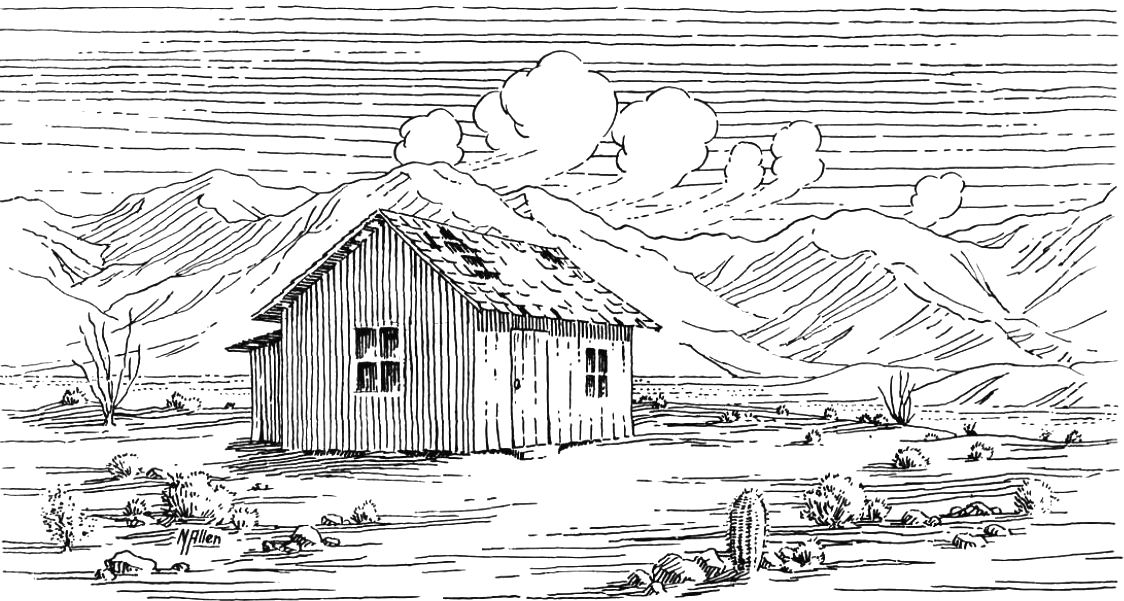
1929 March |
CERRO GORDO (sair' oh gor' do) Literally "fat hill," referring to the richness of gold ore found there. Hill and mine. Gold ledge discovered in 1865 by Pablo Flores, or by a mule driver whose name is known to no authority available in this research |
1938 February |
OLANCHE (Oh lahn'chah) The Yokuts tribe was called Yaw-lan-che, and it is likely the town, peak and mine in Inyo County are a derivative. Means "huge wave." The first mine by that name was worked in 1864. |
|
1938 March |
Independence Formerly Camp Independence. Soldiers under Col. George S. Evans, have been sent to Owens valley to quell Indian uprisings, named the camp on July 4, 1862. |
|
1938 May |
Olancha - Jordan Hot Springs Jay N. Holliday has purchased the Jordan Hot Springs summer camp in the high Sierra and is making extensive preparations to open it for vacationists on May 15. Pack trains will be operated from Jordan pack station near this town. |
|
1938 June |
Lone Pine Sequoia National Park officials announced that within the boundaries of the park 300 lakes and 650 miles of streams will be available to fishermen during the 1938 season. Only three percent of the available fishing waters have been closed to use and large plantings of Rainbow, Golden, Eastern Brook and Loch Leven have been made, which should afford many a thrill for the angler. Limits on catches will be 15 fish per day, caught or in possession, or seven pounds, except Wolverton Reservoir where the special limit of five fish, regardless of size shall apply. A California State Fishing License is required of all persons over 18 years of age. |
|
1938 August |
Independence Appeal has been made to the department of the interior to save from extinction wild burros which roam death Valley. District Attorney George Francis of Inyo County told department officials in Washington that burros running wild in the Panamints are being slaughtered for chicken food when they go to the waterholes. |
COSO (coh'soh) Mountains, hot springs, village and mine. Chalfant thinks the word is Pahute for "fire," originally "cosho;" also the Coso Indian word for "broken coal" or "fire-stone." Mott claims it is the word meaning bull fight arena. Coso mine founded in 1860 by Darwin French and party prospecting for silver and lead. |
1938 October |
Independence - Pheasants released From pens of the Rainbow club of Bishop, 17 ring-neck pheasants, 14 weeks old, were released to fare for themselves in Owens Valley the first week in August. Two pens were taken to Round Valley, four to Bishop, two to Independence and two to Lone Pine. Shipment of 200 pheasants from Napa game farm will be liberated in this area in September. |
OWENS RIVER, VALLEY, LAKE Named by John C. Fremont in honor of Richard Owens, who first met Fremont on the Oregon trail in 1845. Later Owens was an officer in the California army. Fremont and Owens led parties to Walker Lake on November 23, 1845. Indians called the river Wa-o-pee or Wau-co-ba. |
![]()
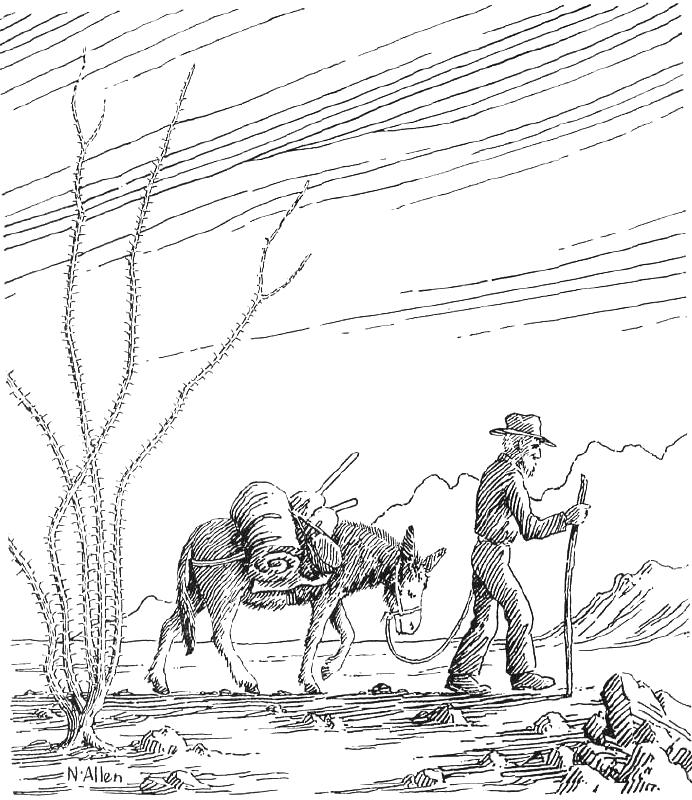
![]()
1939 January |
Lone Pine Established in 1859 by the Hill part prospecting the Iowa silver mine. |
Big Pine - Gold nugget Displaying a gold nugget worth $160, Harry Mornway came to town on election day from his claims in Marble canyon. The find is the largest reported from that district, although several other nuggets have been discovered there. Increased activity is expected on placers in the vicinity, with arrival of spring. |
1939 February |
Big Pine- Pheasants released Pheasants, partridges, valley quail and wild turkeys -- 50,000 of them -- were released in the state during 1938 to provide sport for game lovers, the fish and game department has announced. Many of the game fowl planted were freed in Inyo County, there to breed and increase. |
|
1939 June |
Independence - Ski school A summer ski school on the rooftop of North America overlooking the desert! Hans Georg will be instructor for students in skiing on the high slopes of Mt. Whitney. Snow remains there all summer long. |
|
1939 July |
Independence- Telescope Peak record box Four Sierra Club members have deposited a cast aluminum record box on Telescope Peak, whose 11,045 foot snow-capped summit dominates the distorted heights of the Panamint range in Death Valley. Leland Chase, Bob Rumohr, Bill Roberts and Chester Versteeg were members of the party. The peak was first climbed by W. T. Henderson in December 1860. A prospector, he made the ascent from Bennett's well on the floor of Death Valley. |
|
1939 August |
Bishop - Trail Riders led by Ike Livermore Thirteen-day wilderness trip in the saddle is sponsored by the American Forestry association. The schedule calls for departure of the "Trail Riders" from Bishop on August 20 for exploration of the High Sierra country in Inyo, Sierra and Sequoia national forests. The party will be led by Norman (Ike) Livermore, veteran Sierra Club guide. |
|
![]()

![]()
*Desert Diary / Yaquitepec*
By Marshal South (aka: Roy Bennett Richards)
Desert Magazine - 1940
![]()
1940 May |
Independence- Death Valley Scotty After 54 years in the desert, Death Valley Scotty hankers for bright lights, a home where he can see movies, big buildings and crowds. That's why he says he decided to sell Scotty's castle for "four or five million dollars." Meantime tourists continue to pay $1.10 a head to be escorted by guides through the elaborate establishment built by Scotty and his partner, A. M. Johnson of Chicago. On a recent Sunday more than 300 visitors paid the fee for a tour of the castle. |
Bishop - White Mountain ascent White Mountain's 10,242 foot summit was reached by four ski mountaineers of the Sierra Club early in March -- the first winter ascent of this peak. The climb was made from the Jeffry's ranch in Owens Valley by Chet Errett, Howard Koster, Clyde V. Nelson on skis and Don McGeein on snowshoes. Little snow was found below the 10,000 foot level and the greatest obstacle was a terrific wind, the climbers reported. The ascent of this peak under more favorable conditions was told by Elizabeth Lewis in the November '39 issue of the Desert Magazine. |
Lone Pine - Father Crowley death When his automobile hit a cow on the highway, then smashed into a truck, Father Crowley, famous desert priest, was killed. His parish, one of the largest in the world, ranged over Mt. Whitney, the country's highest peak, down into Death Valley, below sea level, included 10,000 square miles. He was on his way to say 5:30 Mass at Furnace Creek CCC camp in Death Valley, at the time of the before-dawn collision. One of his pet projects called for building an All Souls memorial chapel of native stone on a spur of the Funeral Range in Death Valley and he was leading a campaign to mark historic spots in the valley with wheels from old-time wagons, embedded in concrete. He was 48 years old. Miners and prospectors, Catholics, Jews and Gentiles joined in tribute to the desert padre at his funeral. |
1940 June |
Independence- 20 Mule Team Two of the original 20-mule team borax wagons of famous Death Valley days are on their way across the continent to be displayed at the New York World's fair. In 1917 "Borax Bill," mule skinner extraordinary, drove one of these wagon trains from Oakland eastward, reaching New York two years later. Each wagon weighs 7800 pounds, has a load capacity of 30,000 pounds of borax and carries a 1200 gallon water tank. Water was needed for men and mules on the 162 mile haul from Death Valley borax deposits to the then nearest railroad point at Mojave in the years when the 20-mule teams captured public attention. |
||
1940 August |
Independence- Ascent of White Mtn. Amateur photographer Allan S. Taltavall of Redlands claims record ascent of White Mountain peak, reports he climbed to the top and returned in 15 hours. Taltavall says he drove his automobile to the 6,000 foot level up Leidy Canyon on the east side of the range, set out on foot at dawn, gained the peak at 2 p.m. On the way up, he saw two mountain sheep. He took infra-red pictures of the Sierra range, was able to see views from south of Mt. Whitney to peaks around Yosemite. |
Darwin Elevation 4,4749 feet; population 100. On a mesa above Darwin wash. The wash was named in 1860 by Dr. Darwin French. He determined the name of the town that sprang up when lead and silver were discovered in 1875. At the peak of the boom, says a Death Valley guide prepared by the federal writers project, 1500 people were living here. Darwin has had several booms since then but today not more than 75 houses are left in the old mining town sitting silently in the sun. There is no water here. In 1875 a 12 mile pipe line was built to springs in the Coso mountains but when the pipe became old it leaked so much that no water reached the town. Water is now hauled from Darwin falls 8 miles away. |
|
1940 September |
Independence- Death Valley Scotty gets sued by his partner Death Valley Scotty has been named defendant in a suit asking for nearly a quarter of a million dollars. Plaintiff is Scotty's partner, A. M. Johnson, who claims he loaned $24,291.84 to Scott between the years 1904 and 1939. On July 12 Scotty drove to Independence with Johnson and the summons in the suit was served then. In all the years since 1905 when Death Valley's publicity king made his bid for fame by chartering a special train for a record run from Los Angeles to Chicago, Scotty has insisted his money came from a hidden gold mine on the desert. But, says an Independence newspaper, "by most of Inyo County it has been an accepted fact that Johnson, Chicago hotel man, has been Scotty's gold mine." Pending court action is reported to be "friendly," to forestall anybody else from making claims against Scotty's holdings. In Los Angeles a layer says James Gerard, former U. S. ambassador to Germany, will sue Scott in an effort to get some return from money Gerard said he advanced as a grubstake to the Death Valley prospector in 1902. |
||
1940 October |
Independence- Grubstake suit "They're all hanging on for the publicity." Death Valley Scotty thus explains reports of legal action planned by James w. Gerard against him in an effort to collect under an old grubstake agreement. Scotty's partner, A. M. Johnson, has taken judgment by default against Scott in a suit for money Johnson says he advanced years ago. "Let the other fellow do the worrying." Scotty advised in an interview printed in the Inyo Independent. "I've always remembered the advice of my friend, Joseph Pulitzer, former editor of the New York World. He once said, 'Never commercialize yourself, never get the swell head, never show your hole card. Me, I ain't showin' my hole card.'" |
||
1940 November |
Independence- Pet rat exchange Mr. and Mrs O. J. Taylor's pet trade rat left smooth, shiny pebbles in exchange for matches he took from a pocket of Taylor's trousers, but as yet has left no check to pay for the trousers which were burned. Making the exchange, the trade rat ignited the matches in the pocket of the trousers, which were hanging on a door. A new pair of overalls, hanging over them, also burned. |
||
![]()
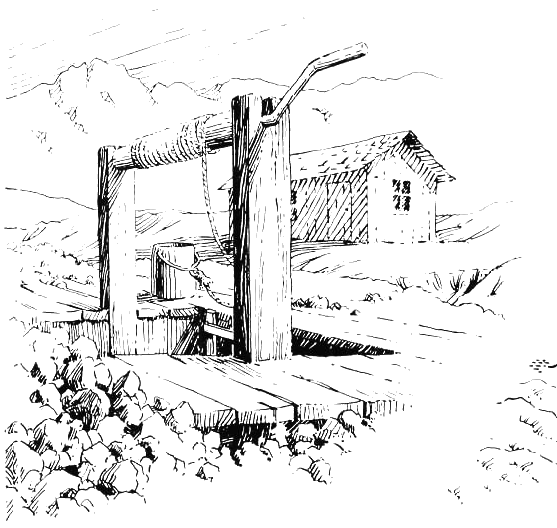
![]()
*Desert Home / Refuge*
By Marshal South (aka: Roy Bennett Richards)
Desert Magazine - 1941
![]()
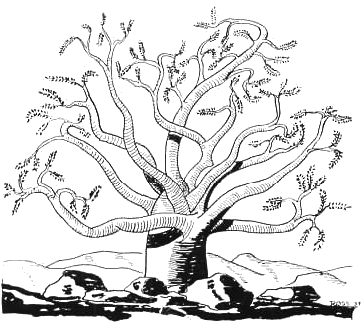
![]()
1941 March |
Independence - Mountain lions killed Hunters killed 228 mountain lions in California during 1940, and turned in the skins for payment of bounty. Ninety-nine of the predators were males and 120 females. Since 1910, the state division of fish and game has paid $205,100 in bounties on 8,634 mountain lions. Four hunters are on the state payroll now. Jay Bruce, of the fish and game division staff, has 600 lions to his credit since his employment 30 years ago. It is estimated that an adult lion will kill one deer a week and will destroy in a year sheep worth $1,000, provided, of course the varmint is roaming in sheep country. |
1941 November |
Bishop - Pahutes given farms Pahute Indians revived the ancient harvest festival late in September to celebrate the dedication of the Indian Service resettlement project which gives them 1,200 acres of small farms with homes to take care of 126 Owens Valley families. The project represents an expenditure of $500,000 by the Service. Work was done by Indian labor, houses being constructed of native pumice brick. |
![]()

![]()
*Desert Refuge*
By Marshal South (aka: Roy Bennett Richards)
Desert Magazine - 1942
![]()
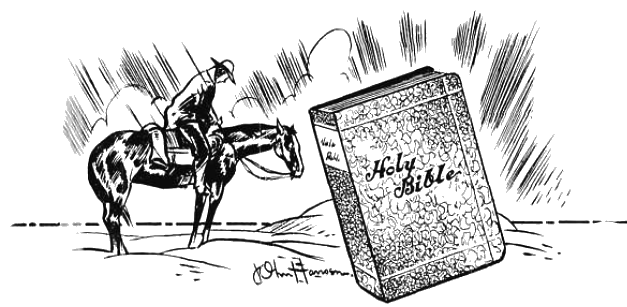
![]()
1942 January |
Independence - True deserts Dr. Wladimir Gorczynski, California climate authority says that California and Arizona have no deserts, but rather cactus-covered steppes. True deserts are composed of sand dunes with little or no vegetation, like the Sahara. |
||
1942 February |
Independence - Wild sheep for museum Carl Walters and Earl Hurbut followed a band of wild mountain sheep into the Inyo Mountains back of the Reward mine and shot one for the Los Angeles museum at Exposition Park. Three other sheep have been killed in other parts of the state for the museum. |
Bishop - W. A. Chalfant sells the Inyo Register Pioneer and historian of this area, W. A. Chalfant has announced the sale of the Inyo Register which he has published and edited for 56 years. Started by his father in 1885, the Register has been in the Chalfant family ever since. Purchasers, Roy L. French, director of journalism at the University of Southern California, and George W. Savage, who together own the Inyo Independent and Owens Valley Progress Bulletin, announced that the 3 papers will hereafter be published under the name of Chalfant Press. Thus will the Register continue to be a symbol of the the name of Chalfant. |
|
1942 April |
Independence - Soda products output The capacity of soda products plant of American Potash and Chemical Corp., at Trona, may be almost doubled within a short time, it has been announced by company officials. An expenditure of $1,300,000 is contemplated. Two improvement programs have been started and will be carried forward simultaneously to meet increasing soda ash and salt cake demand created by defense emergency. |
Independence - New road construction Two roads in this area will be built now that federal assistance has been assured. Reconstruction of the Pine Creek canyon road through to U. S. Vanadium and a road through the southern end of the Saline Valley are included as two vital routes necessary to speed delivery of vital tungsten metals from U. S. Vanadium area and valuable salt, talc and other defense minerals from Saline Valley. Congressman Harry Englebright stated, "Final approval has been given by forest service, war department and bureau of public roads to make available $1000,000 for cooperative fund to reconstruct the Pine Creek canyon road into Inyo National Forest." |
Hawthorne - Narrow gauge to standard gauge rebuild
Proposals to rebuild an inactive narrow gauge railroad line from Mina to Keeler, California, to standard gauge width are being heard here. Construction of magnesium refining plant near Las Vegas and calcining plant north of Luning in Gabbs Valley, where magnesite ore for Las Vegas is to be mined, gave impetus to talk of the southern Nevada railroad revival. It has also been proposed to rebuild an abandoned line from Goldfield to Beatty to permit rail shipment of ore direct from Luning south to Las Vegas. Nothing definite has come of this. |
1942 July |
Independence - Death Valley Days As true as the stories told over "death Valley Days" is the fact that the editor of that radio program is a woman, Mrs. Ruth C. Woodman. She is a graduate of Vassar, and has raised a family in Rye, N.Y. Mrs. Woodman makes annual trips to Death Valley regions. Her method of working is simple. She takes a male guide only as a means of entree into saloons and such places normally prohibited to a woman and when on treks into out-of-the-way camps. |
||
1942 October |
Bishop - Road to scheelite claims Ten and one-half miles of road to the H.A. Van Loon and J.E. Morhardt scheelite claims is being built by the federal government at a cost of $50,000. About one mile of the road leading from McGee Creek resort, 40 miles northwest of Bishop, has already been completed. |
||
1942 November |
Independence - Mt. Whitney hiker injured Edgar Stribling, 69, of Long Beach lay in a hospital here suffering from pneumonia and bruises after his third attempt to climb Mt. Whitney, the highest point in the United States. Stribling was accompanied as far as the 11,200 foot level by J. Tueller Rice, also of Long Beach. Returning from the top, Stribling apparently lost the trail and fell down a granite cliff. An army glider trainee searching party found him half-frozen in a brush-covered canyon |
||
![]()
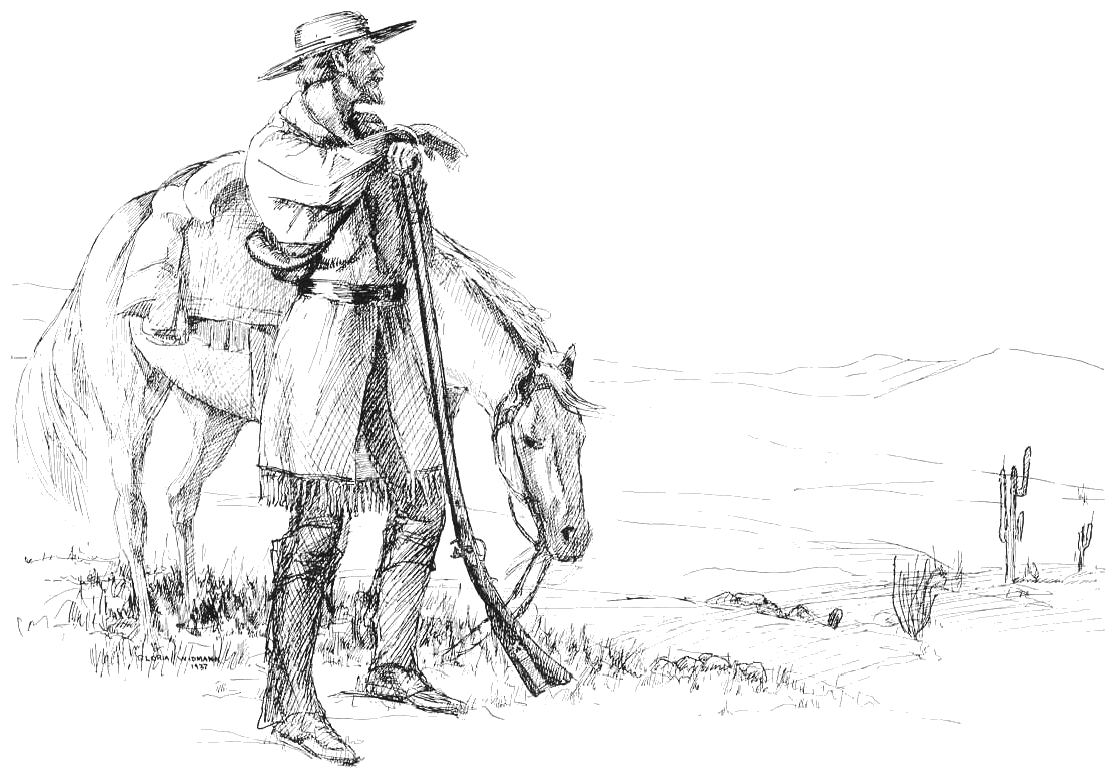
![]()
Meet -- Chalfant of Inyo
By Mora M. Brown
Desert Magazine - April 1943
![]()
Mirage -- Magic of the Air
By Jerry Laudermilk
Desert Magazine - September 1943
![]()
*Desert Refuge*
By Marshal South (aka: Roy Bennett Richards)
Desert Magazine - 1943
![]()
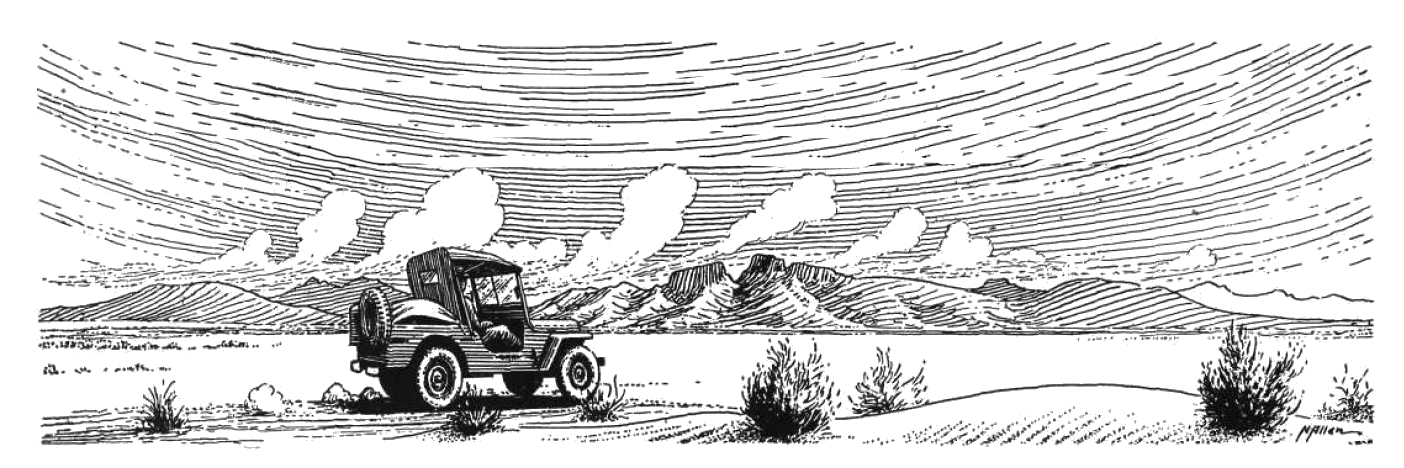
![]()
1943 March |
Benton - Railroad abandoned Permission has been granted by the interstate commerce commission for abandonment of the railroad from Laws to Benton. A paved highway parallels the branch between the points for its entire length. There are three stations north of Laws, Benton, population 50, Hammil and Shealy, unpopulated. A small amount of alfalfa and livestock is raised in the vicinity. |
||
1943 May |
Bishop - Tungsten strike One of the most important tungsten strikes yet uncovered in this area was made recently by the Tungstar company on its property in the Pine Creek district, reports the Inyo Register. At a 200 foot depth an extensive ore body was encountered, with values running three percent scheelite. The ore body has been opened 85 feet and shows a width of 25 feet. Groundwork has been started on a government housing project for mine workers. Twelve buildings with 48 units will be erected in Bishop, and buildings containing 130 housekeeping units will be located on Pine Creek. |
||
1943 June |
Bishop - Meat stamps needed If anyone has extra meat stamps, they'll be welcomed by Simba, seven-months-old African ion cub owned by Gene "Tiny" Davis. Tiny's daily rabbit hunting excursions so far have kept the cub satisfied, but he intends to keep the rough playing cub and train him, perhaps as a North African commando. |
Bishop - W.A. Chalfant retires as editor W.A. Chalfant, who has edited the Inyo Register for the past 57 years, has relinquished his editorship to Todd Watkins, who has been news editor of the Inyo Independent and Owens Valley Progress-Citizen for the past two ears. Chalfant will continue his "Tales of the Pioneers" column and make other editorial contributions. |
Lone Pine - Wife of Scotty's partner dies Mrs. Albert M. Johnson, wife of the retired millionaire who financed the spectacular career of Death Valley Scotty, was killed in an auto accident near here late in April. Mr. Johnson escaped with minor injuries. |
| Independence - Borax production Borax production in the state for 1942 fell about 10,000 tons below 1941 totals, according to figures released the last week in April by State Mineralogist Walter W. Bradley. Borate deposits in Owens Lake and Death Valley and nearby areas of San Bernardino and Kern counties accounted for the entire state output, a total of 232,833 net tons valued at $4,929,553. |
|||
1943 July |
Bishop - Snow storm hits the desert Inyo-Mono residents shivered through a day of rain, snow and rainbows late in May, as eastern California was struck by "unusual" weather. Six to eight inches of snow fell in the June Lake area. Snow blanketed highway at Lee Vining, north. Panaminas and U.S. Vanadium mines reported six to 10 inches of snow. Six inches of snow fell in four hours at 9,000 foot elevations. Little damage to gardens was reported. |
||
1943 August |
Bishop - Tracking earthquakes Seeking cooperation of Inyo-Mono residents in tracing earthquakes the government has issued postpaid cards addressed to the Seismological Field Survey for anyone wishing to report earthquakes. Franklin P Ulrich of the U.S. Coast and Geodetic Survey was in Bishop last month following a temblor on Memorial Day. |
Bishop - Draft exemption Automatic draft exemption for mine and smelter workers in non-iron metal industries is anticipated from statements by General Louis B. Hershey, Paul V. McNutt and Chester Davis. Plan, if adopted, the exemption will affect 15,000 skilled and unskilled workers in the Southern California manpower area, and about 10,000 at Basic Magnesium Inc., near Las Vegas, Nevada. |
|
| Bishop - W.A. Chalfant's story welcomed My Dear Friends, You are doing a grand job of editing Desert Magazine. The April issue gave me a special pleasure for it had a mighty good story on Bill Chalfant of the Inyo Register. I was born and reared in Bishop, Inyo County, and have know Mr. Chalfant since I was a child. As I use to be director of the U.S. National Park Service and was often in the desert country of the Southwest I now it about as well as anybody. And now, while I live most of the year in and near New York, my business, the United Potash Company, is at Carlsbad, New Mexico, so I get out there two or three times a year and often go to California in connection with the trips. The magazine has become an indispensable thing to me as an old Inyo desert rat with lots of sentiment for my boyhood range. HORACE M. ALBRIGHT (See Desert Magazine, April 1943.) |
|||
1943 October |
Independence - U.S. Vanadium Rich scheelite deposits operated by U.S. Vanadium corporation make Inyo County the "country's hot spot for tungsten," according to Mel Wharton in Explosives Engineers Journal. Refinement of processes combined with huge deposits of mineral make operations here the world's largest, although the ore is low grade. In addition to tungsten, molybdenum, copper, silver and some gold are recovered from ore on this property. |
Bishop - Robbing bears A huge brown bear which had been robbing outdoor coolers, stealing food, and attempting to enter cabins of Mammoth residents for months met his end in August when he was trapped and shot by Rhys May. Permission to shoot the "too friendly" animal was given by forest rangers in the interest of public safety. He measured nine feet, nine inches in length, weighed about 600 pounds -- at last reports, bear meat was quite abundant in Mammoth country, no ration points asked. |
Independence - Malaria battle begun The Owens Valley board of supervisors earmarked a $3,380 fund for county-wide mosquito eradication when representatives of Bishop, Independence, Lone Pine and county health officials appeared before the board to plea for resumption, on health grounds, of mosquito control program. Although no active cases of malaria have yet been reported, it was declared certain that Inyo County soldiers will return after the war infected with tropical disease and all preventive measures possible should be taken now. |
1943 November |
Independence - Iron ore deposits Persons having information about iron ore deposits were urged to get in touch with representative-elect Clair Engle, at his office in Washington D.C. Engle, in a message to Second District residents, said that funds had been provided by congress to explore deposits and supply technical information needed by prospective steel and mining operators on the west coast. Information, Engle said, will be turned over to a special committee empowered to recommend such explorations. |
Bishop - W.A. Chalfant honored W.A. Chalfant, editor and author of California books, recently was notified of his election to honorary membership in the International Mark Twain society. Recognition was for his contribution to American history in his new book, "Tales of the Pioneers," and the notification was signed by Cyril Cemens, president of the society and a relative of Mark Twain. |
Independence - "Panamint George" "Panamint George" Hanson, 103 year old Pahute Indian, died on September 19th in Panamint Valley where he was well-known and respected by old-time residents. Born over a century ago, George saw the struggling Jayhawker Party and other early expeditions into Death Valley and surrounding deserts and mountains of Inyo. (See Desert Magazine, February 1940.) |
![]()

![]()
1944 January |
Bishop - Bill Chalfant is mourned W.A. Chalfant, dean of western editors and historian of eastern California and Death Valley, died at his home here on November 5th. He had served his community for almost 60 years, editing the Register which he and his father started in 1885. He was born in Virginia City, Nevada, in 1868, son of P.A. Chalfant, member of the Manly Death Valley party. Well know are his books, "Death Valley, the Facts," "The Story of Inyo," "Outpost of Civilization" and "Tales of the Pioneers." (See Desert Magazine, April, 1943) |
||
1944 March |
Bishop - Hydro-electric project approved A proposed $16,000,000 hydro-electric project for the Owens River gorge north of here was given additional support by favorable action taken in January by the Los Angeles city council which approved its water and power committee report. The council thereby urged immediate drafting of plans for constructing four hydro-electric plants in the gorge and acquisition of the rights of way. |
Lone Pine - Golden eagle tamed Residents watching a huge golden eagle on the roof of a cafe here stared in disbelief when Joe Grivet paraded the bird down Main Street. He had caught the eagle in a coyote trap set in the Alabama Hills and had nursed it back to health. He intends to free the bird, which has an eight-foot wingspread, but it has become partially tame. |
Lone Pine - Ore in Darwin Potential ore reserves of "several hundred thousand tons" are indicated in the geologic formations of the Darwin area, according to an article by L. Kenneth Wilson, geologist for E.L. Cord mining interests, published in the November issue of the Society of Economic Geologists bulletin, Yale University, New Haven, Conn. The discovery of the high grade body of scheelite ore by Curley Fletcher of Darwin in 1940 was followed in 1941 by acquisition of 23 tungsten claims by the Cord interests which has brought production to 30,940 tons. Wilson estimates reserves of 26,000 tons of 0.60 percent tungstite. |
1944 April |
Manzanar - Guayule drain stoppers Sample drain stoppers produced entirely within this Japanese relocation center from guayule rubber produced here, were exhibited in mid-February. Guayule plants are being developed in the camp's experimental nursery and 10 acre farming plot. The rubber is processed in two mills here under varied conditions. |
||
1944 May |
Bishop - Borate production A total of 249,523 tons of borate material, valued at $4,953,174, was produced in California in 1943, bulk from two properties in Inyo County and two in northern San Bernardino County. Material included sodium borates from Kern County, crystallized borax prepared by evaporation of brines at Searles Lake in San Bernardino County and Owens Lake in Inyo County, and a small amount of colemanite from Death Valley. Production for 1942 was 203,716 tons. |
||
1944 July |
Bishop - Looking for Ole Anderson The Red Cross here is seeking the whereabouts of Ole Anderson, formerly with Vanadium corporation mine. He had sent a worried message to his nephew in Norway on October 9, 1942. A reply has just been received here for him through the International Red Cross, Geneva, Switzerland, from Nels Visdahl, Vaage, Gudbrandsdalen province, Norway. Anyone know Anderson's present address should communicate with Mrs. Mary Holman, director of the Red Cross home service department, Bishop. |
||
1944 September |
Bishop - Price of gold The regular July monthly meeting of the Western Mining council was held in Bishop. The council formed a resolution to by-pass President Roosevelt's power to raise the price of gold to $41.67 and asked congress to set the price at $70.00. Blaming present war costs of labor and material, taxes and governmental regulation, various speakers maintained congress should take action to set the desired price. |
||
1944 December |
Bishop - Naval base planned Captain Sherman E. Burroughs Jr., base commander, has announced progress of the U.S. navy's largest ordnance test station, extending over Inyo, Kern and San Bernardino counties in Indian Wells Valley. The structure, to be permanent experimental laboratory, is expected to cost $48,000,000 when completed. |
||
![]()
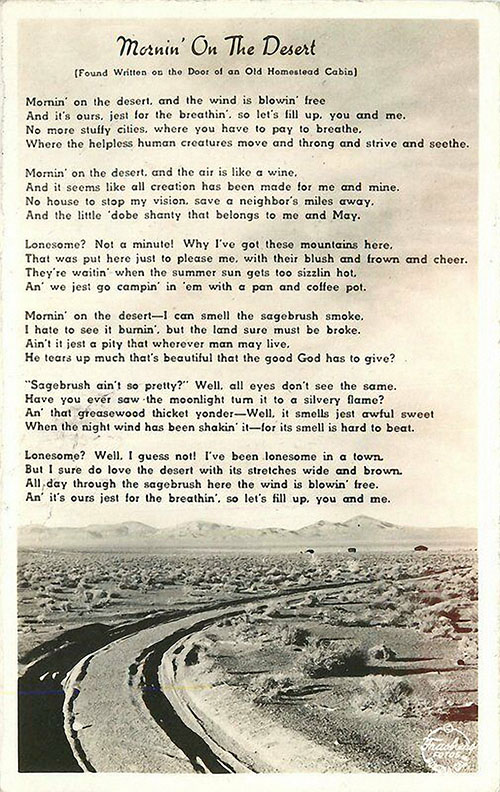
Mornin' On The Desert
(Coutesy of ebay)
![]()
1945 March |
Lone Pine - Wildcats barbecued by power lines Power service in this area was disrupted recently when two playful wildcats shinnied up a power line pole and became involved in cables carrying 33,000 volts of electricity. When the repair crew arrived the bodies of two well-cooked cats were lying on the ground. |
1945 July |
Zane Grey Zane Grey's Wanderer of the Wasteland was recently filmed in southern Inyo County by RKO. Filming locations included Whitney Portals, Alabama Hills, R.B. Spainhower ranch and the Keeler-Darwin area. |
1945 August |
Bishop - Darwin mines Darwin mines property has been purchased by Anaconda Sales Corporation, a subsidiary of Anaconda Copper Company, it was disclosed in June. Transfer was to take place on August 1st. Mine and mill property, which has been employing abut 100 men producing strategic lead ore, includes about 2000 acres near Darwin. |
1945 September |
Bishop - Saddle Rock gold mine The Saddle Rock gold mine at Skidoo has been purchased by Wm. C. (One Match Bill) Thompson of San Fernando from Helene West, former owner of the Stove Pipe Wells Hotel, and called "The Princess" by her friend Death Valley Scotty. This is the second mining property purchased by Thompson in recent months. In April he acquired the Shorty Harris gold and scheelite tungsten property in Gold Belt mining district, considered one of the richest tungsten deposits in the US. Also in recent months he has discovered copper and tungsten deposits in Shelf and adjoining Death Valley mountains. |
1945 October |
Bishop - Companies conspiring to violate anti-trust law Six companies and 10 of 11 executives have been charged with conspiring to violate the Sherman anti-trust law by monopolizing world supply of borax were fined $146,000 on August 16th by Federal Judge A.F. St. Sure in San Francisco. (Ninety-five percent of the world's borax is produced in California.) The California properties of two British companies, Borax Consolidated Ltd. and Borax & Chemicals Ltd., London, were ordered sold by a receiver. The British group, which includes Pacific Coast Borax Company, was ordered to terminate litigation with the government over ownership of the Little Placer claim in Kern county, valued at $7,000,000, one of the world's richest kernite deposits. Title reverts to the U.S. Pacific Borax who also must sell the Western Borax mine in Kern County, for which it paid $700,000. Borax Consolidated must sell the Thompson Mine in Death Valley, for which it paid $100,000. U.S. companies involved are: United States Borax Company, Los Angeles; American Potash & Chemical Corporation, New York; Three Elephant Borax Corporation, New York. |
1945 November |
Lone Pine - Darwin on a come-back Business is on the upgrade at the old mining camp of Darwin, according to prospectors who have been in the vicinity recently. During the war, Darwin lost most of its surviving population and commerce, but it is reported now that the lead mines in the district are to be reopened, and the general activity has improved to the point that Bob Thornsen plans to reopen his general store. |
![]()
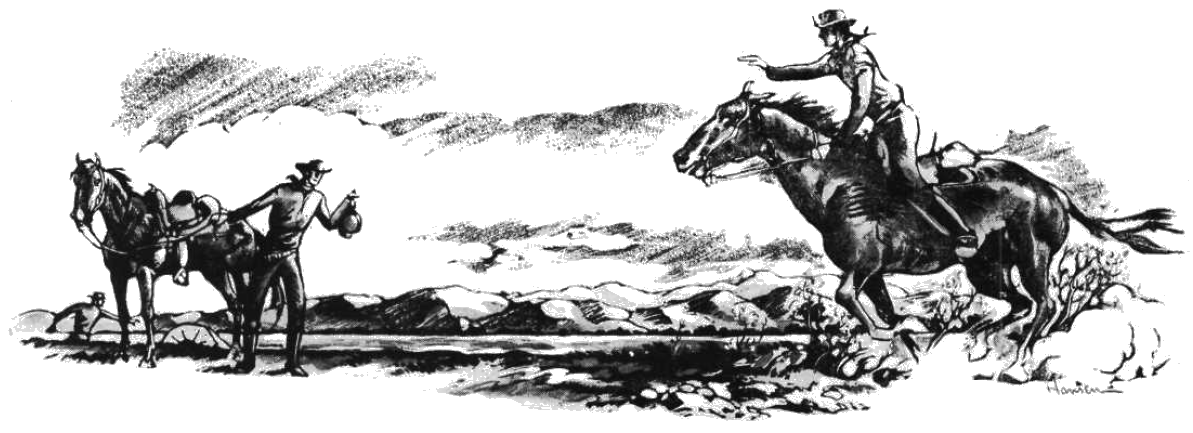
![]()
1946 January |
Lone Pine - Mine operators bill A bill that would give mine operators a right to file claims against the federal government for damages resulting from the WPB's order closing gold mines for the duration, has been introduced by congressman Clair Engle of California. The operators would be entitled to all the damages and costs attributable to the gold closing order, but not for the loss of production. Claims would be filed with the Secretary of the Treasury, and the decision, if adverse, may be appealed. |
||
1946 February |
Bishop - Jean Pierre Aguereberry dies Jean Pierre Aguereberry, one of the last of the oldtime prospectors of southern Nevada and Death valley country, died of a heart attack at Tecopa on November 21st and was buried in the Lone Pine cemetery. "Pete" and the late Shorty Harris first came to the Death Valley region with their burros in the early part of the century, discovering the Skidoo gold mine on July 4, 1904. He had lived for the past 40 years just 10 miles south of Skidoo at his gold mine camp at Harrisburg Flat, coming there from the Basque country on the French side of the Pyrenees. He built the road from the Flat to what is known as Aguereberry Point, one of the most scenic spots of eastern California. |
Bishop - New pilot plant A pilot plant with a capacity of 500 tons daily is to be installed on the holdings of the Cain estate in the old Bodie gold mining camp, according to the statement of W.A. Linfesty, consultant for the Sierra Mines, Inc., which is back of the project. |
|
1946 April |
Bishop - Bodie mine reopened Bodie, the famous old mining camp north of Mono Lake, California, is to be reopened by a British group operating as Sierra Mines, according to reports. The company has acquired the property of the Cain estate and plans to build a mill of 500 tons capacity. The mines were rich gold-silver producers in the early 1880s. |
||
1946 May |
Independence - And then the ground opened ... Residents of the Inyo-Mono area were jolted out of their sleep on March 22nd by a series of sharp earthquakes which rocked the lower end of the valley and resulted in a break in the Los Angeles aqueduct 70 miles south of Lone Pine. Damage to the aqueduct, in the section between Nine Mile and No Name Canyons, was caused when boulders crashed down the mountainside into the open canal. Water surged over the edge of the dirt bank in two spots, cutting a channel as it gushed out. When it had reached U.S. 395, some five miles to the east, it had spread into a small river some 20 feet wide and hub-deep across the road. Jesse R. Smith, Lone Pine photographer, abandoned efforts to photograph the damage when the ground began to open under his feet. He was watching tilting of the ground on a sidehill when, he said, "Suddenly with a wrench, the ground began to split open. I looked down and saw a widening crack forming on the spot where I was standing. That was when I left." Earthquake shocks in the neighborhood of Owens Valley may be expected for the next several months, C.F. Richter, professor of astronomy at the California Institute of Technology, declared. The last major earthquake in this area, he said, was in 1872. The fault line, which extends through the southern part of the valley, is clearly visible in some sections where the land suddenly drops some 15 to 20 feet. Two spots just north of Lone Pine are particularly noticeable. |
||
1946 June |
Bishop - Indians unite for rights Federated Indians of California, a coalition of Indian organizations, communities and individuals formed at Sacramento in March, have drafted a bill to be introduced into congress by congressman Ellis Patterson. The bill is to ask an appropriation balance of $93,000,000 which Indians claim is due them as damages for loss of their rights in 75,000,000 acres occupied by them in California until in the 1850's at which time they were removed to reservations promised them in 18 treaties made at that time with the government. These treaties subsequently were rejected by the US Senate, said to be because of pressure brought by California gold miners and others already occupying the proposed reservations. The United States court of claims recognized their rights when it awarded them $5,000,000 under suit brought in their behalf by attorney general of California. Due to flaws in wording of the act, this was the largest sum that could be awarded; therefore Attorney General Robert Kenny advised them to seek additional damages direct from congress. |
||
1946 July |
Independence - Mt. Whitney Pack Trains sold After more than 20 years of operating Mt. Whitney Pack Trains, Frank Chrysler and Ted Cook of Lone Pine, have sold their interest to Norman B. "Ike" Livermore, Jr., of Mineral King. |
||
1946 August |
Bishop - Boundary Peak scaled Members of the Sierra Club recently made a successful climb to the summit of Boundary Peak on the California-Nevada border where they built a cairn and left a record of the ascent. The summit, 13,145 feet, is on the Nevada side of the line and is the highest peak in that state. |
Bishop - Inyo-Mono Association Plans are under way for reactivating of the Inyo-Mono Association which until 1942 conducted advertising and information service to stimulate vacation travel to the scenic region of the desert side of the High Sierras. Because of overcrowded housing this summer, advertising for the present will be limited to featuring the winter sports opportunities here. |
|
1946 October |
Bishop - Destructive cloudbursts Cloudbursts at the end of July and early August caused damages to US Vanadium properties in Pine Creek in excess of $100,000, not including almost total loss of personal and household effects of employees. It was announced that 15 homes were totally destroyed, and that 14 damaged houses will be moved and rebuilt. |
Independence - Snow survey station Construction of a cabin at Big Whitney Meadows to be occupied by snow surveyors was started late in August. The project will facilitate snow measurements on the upper slopes of Inyo National Forest where much of the water flowing into the Kern River drainage falls as snow during the winter. |
|
1946 November |
Bishop - Sierra Mines Sierra Mines expects to install a 500-600 ton reduction plant at Bodie to replace the Roseclip Mill destroyed by fire five months ago, according to S.B. McCluskey, manager. A subsidiary of the American Goldfields Development Company, Sierra Mines controls a number of properties in the historic Bodie field. |
Independence - Modoc Mine ore Ore from the old Modoc Mine in the Argus range soon will be moving to Utah smelters according to Leo Baccoccina, who recently has leased the lead, silver and zinc property. Believed to have been opened originally by Mexican miners, the Modoc has not been worked since 1890. At that time Chinese labor was used and charcoal kilns were constructed in Wildrose Canyon. The charcoal was freighted by mule team across Panamint Valley to a crude smelter. |
|
1946 December |
Independence - Eastern California Museum expansion Plans for the expansion of the Eastern California Museum were made at a meeting here in October when Mrs. Bessie Best was elected new president of the organization. It was announced that the board of supervisors has granted additional space in the county court house for the exhibits being assembled by the organization. |
||
![]()
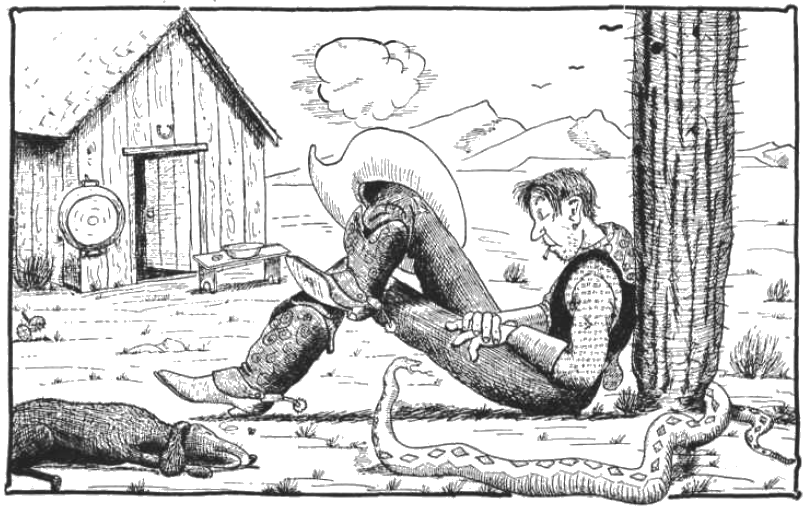
![]()
Tracks of the Overland Stage
By Marshal South (aka: Roy Bennett Richards)
Desert Magazine - November 1947
![]()
Padre of the Desert
By Margaret Phillips
Desert Magazine - October 1947
![]()
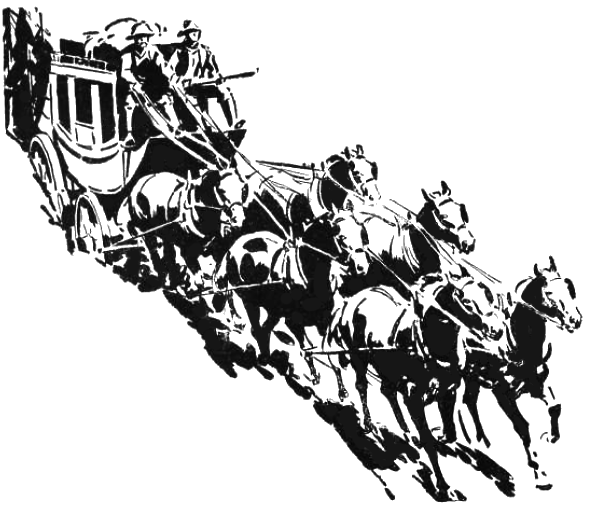
![]()
1947 January |
Independence - Fire in Olancha Fire has destroyed post office, store, garage, service station and residence in Olancha. Resident and tourist volunteer fire fighters used garden hoses, buckets, shovels and snow balls in efforts to keep the fire from spreading. |
Independence - Decoys Decoy Why not locate ducks from the air? Andri W. Reichel of Inyokern knows one reason. Reichel had himself flown from Bishop over Owens River area and sighted a dozen fat mallards on a little pond, with no hunters visible in the area. Reichel landed and reached the pond in short order. About to open fire on the still-sitting ducks, he was warned by their owner, hidden in the bushes, "Take it easy, hunter, those decoys aren't very good eating." |
Independence - Quail Survey Scheduled Quail hunters were asked to cooperate with California division of fish and game, bureau of game conservation, who are making a statewide food-habits survey of native mountain quail ranges. Hunters were asked to turn in crops and gizzards of the birds they shot, to local collection stations, along with specified information. Food-habits survey is part of a research program designed to improve the status of mountain quail. |
| Lone Pine - Manzanar is Being Dismantled Manzanar, relocation center for some of the more recalcitrant Japanese during the war, is vanishing piecemeal under attacks of home-hungry veterans. WAA put 320 buildings, 37 warehouses ad approximately 1,000,000 board feet of used lumber on sale. Veterans and priority holders snapped up nearly half of the entire inventory the first day. Barracks and mess halls went for homes, ranch buildings, barns and airport facilities. They were priced from $50 to $500, and sold "as is -- where is." |
|||
1947 February |
Bishop - Monte Christo Mine Operations at the Monte Christo mine, Mammoth, were suspended for winter after a heavy snow slide killed two mine staff members and heavily damaged office, cookhouse, staff house and other buildings. The bodies of Lloyd Young, mechanic, and Paul M. Laipple, accountant, were found under five feet of snow after two days of intensive search. The slide came from Mammoth ridge to east of buildings, splitting into two sections. One was about 75 feet wide, the other 700 feet wide and five to seven feet deep. |
Bishop - Caretaker Supplied by Air Jim Carnahan, 82-year old caretaker of the Gold Standard mine in Saline Valley, is now well supplied for the winter. Carnahan, marooned for two months by impassable roads, was down to his last handful of beans when Mrs. Cleora Monteith became queen for a day on a radio show. Mrs. Monteith who, with her husband A. E. Monteith, owns the mine, requested that supplies be sent to the caretaker by air. Pilot Harland Ross made several landings in a small Cessna at the mine and furnished the startled caretaker with food and publicity. |
|
1947 March |
Lone Pine - Beryllium The only commercially important deposit of the rare ore of beryllium known to exist in the United States is being developed six miles southeast of Lone Pine by Walter J. Sorensen, local miner. When Sorensen first sent samples to government agencies, they were returned with a notation that they contained beryllium, but that they must come from South America, since none existed in this country. The deposits are encountered in hillside outcroppings, and are being worked in open cuts and trenches. Five distinct veins have been staked at Inyo-Beryl mine, and prospecting for the main ore body is continuing. This rare material is used as hardening agent for copper and in ceramics. It also occurs as the gems emerald and aquamarine. |
||
1947 April |
Independence - Permanente Metals After a rush job of construction, the new plant of Permanente Metals corporation on the shores of Owens Lake in southern Inyo County started production of soda ash in February. Brine is pumped from the lake to a million-gallon storage tank where the processes of heating, carbonization, dehydration and purification are completed in five stages. It is reported that the Kaiser aluminum mill will use the product of the mill. |
||
1947 May |
Bishop - Pumice Plant The pumice brick plant of Bishop Building Materials company has been redesigned and streamlined. All-steel rig now is producing 2,000 bricks of 10 types in an eight hour shift. The plant, which has produced 300,000 bricks, has a heated drying shed for use in cold weather. Constant tests are run on the bricks to determine their stress resistance and insulation factors. Electric vibrators in molds allow mass to be well bonded. The use of pumice building bricks is increasing, but local supply of pumice is considered adequate for any expansion. |
||
1947 July |
Benton - Raiding Lion Trapped A six-foot mountain lion which had been killing goats was trapped south of Black Lake in the Benton region by Herbert Haue, state trapper of Bishop. The age of the lion, one of few ever caught in Inyo-Mono area, was estimated at 10 years. Hague reported that the animal's teeth showed signs of breaking down, probably explaining why he raided domestic yards rather than hunting deer which usually suffer considerable losses. Bounty on male lions is $45. |
||
1947 August |
Bishop - U.S. Vanadium U.S. Vanadium corporation has resumed mining operations at its Pine Creek unit. The mine and mill operations were suspended last December 31, until new ore could be made available. Work on the company's tunnel under the main ore body is expected to reach its goal of 7,000 feet in September and it is hoped that enough ore will be stockpiled by November 1st to keep the mill running all winter. Jim Galloway is the mill superintendent and Jack George is the assistant. The payroll will include 225 employees when full production is reached. |
||
1947 September |
Bishop - Magnetic Separator The largest magnetic separator in the United States has been installed at the tungsten mill of Bishop Concentrate and Cleaning Company, seven miles south of Bishop. The new firm plans to process concentrates for tungsten producers in the area. According to Glenn E. Benweare, the company also has installed complete roasting facilities for upgrading the concentrates. |
Bishop - Power from Owens River The Los Angeles department of water and power has been authorized to construct three hydroelectric plants in the Owens River gorge, at a cost of $40,526,000. The new plants will utilize the 2,375-foot drop between Crowley Lake and Birchim canyon. Each of the three units will contain a single 37,500 watt electric generator. Power will be delivered to Los Angeles over a 250 mile, 230,000 volt transmission line to San Fernando Valley. Design and construction work will start immediately. |
|
1947 December |
Needles - Last Mojave Chief Dies Chief Pete Lambert, of the Mojave Indians, died in September and his funeral rites and cremation, held September 20-23, were attended by 1,500 Indians and 250 whites. Chief Lambert, son of Chief Ampodqualachichi (Hide Behind the Dust) and grandson of Chief Humosquahoat (Star Orator) had been leader of the Mojaves since election by the tribal council in 1890. Hal Davidson, counsellor for the tribe, said that a successor to Lambert probably would not be elected. The tribal council will handle tribal matters. |
Bishop - Markers for Walker's Trail The Eastern California Museum association is completing plans to place markers along the route followed by Joseph Walker, early explorer of the eastern Sierra for who Walker Lake, Nevada, and Walker's Pass in Southern California were named. Walker led an expedition of fur-traders down the Humboldt and across to California in 1833. |
|
![]()
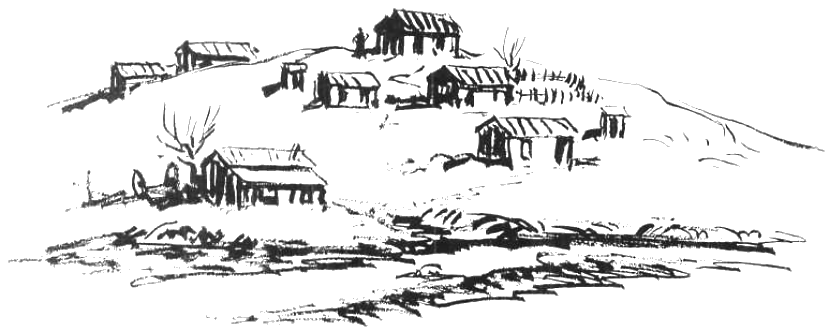
![]()
1947 8mm Film: Marshal South Family on Ghost Mountain in the Anza Borrego Desert
YouTube Post by peahix
![]()
Ghost Mountain Christmas
YouTube Post by John McDonald
![]()
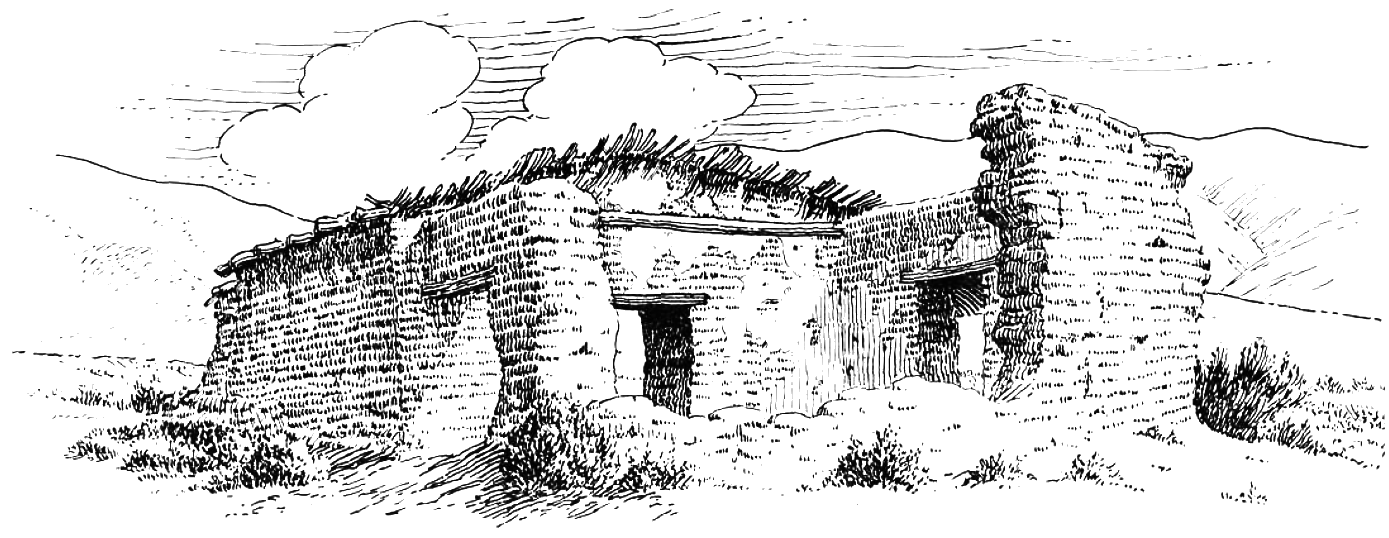
![]()
1948 January |
Lone Pine - Coyotes Find a Friend Howard V. Shelbley, fish and game patrol captain for the Inyo-Mono area says that coyotes have an important part to play in maintaining the balance of wildlife. In one instance, coyotes were exterminated in an area by poisoning the rodents upon which they fed. The local deer herd then grew out of proportion to available feed and agriculture suffered. In another case, coyotes were practically wiped out by state trappers and rodents took the area over. He explained that biologists of the fish and game service believe that cottontail rabbits serve as the coyote's principal food. |
Bishop - U.S. Vanadium Mill work at U.S. Vanadium property of Pine Creek was resumed on November 1st, with the 1,400 ton mill working at half capacity, according to Ray Sullivan, superintendent. Enough ore has been stockpiled at the mill to assure continuous operation through the winter, he said. Mine and mill crews have been increased to 250 men and underground mining will continue through the winter with the ore brought underground for the short tram haul to the mill. Tungsten concentrates are being shipped to the firm's own operations in the east. |
Bishop - Tungsten Concentrates More than $1,000,000 worth of tungsten ore concentrates are being assembled annually in Bishop, the only depot in the western states for assembling these products, Philip Gardiner of Bishop Assaying and Engineering company states. Ores are processed by Bishop Concentrate and Cleaning Company, and then samples are taken by Gardiner's automatic sampler and tests run before the concentrates are shipped in carload lots to Molybdenum Corporation of America at Washington, Pennsylvania. At present ores come chiefly from California, Arizona and neighboring states. |
1948 February |
Independence - Owens Valley Water Fight Continues Representative Claire Engle has a bill pending in congress which would throw open to public entry 500,000 acres of public domain in Inyo and Mono Counties. The city of Los Angeles is pressing a counter-measure to make the opening of such lands subject to certain easements and water rights in favor of the city. Los Angeles claims that the Engle bill would cost the city $30,000,000, which it would have to pay for rights to individual owners who acquired the land. |
||
1948 April |
Big Pine - Eureka Valley Sulphur Mines Eureka Valley Sulphur mines, near Big Pine, will resume operation in the near future, it is reported, with R. E. Ketching in charge. The product will be marketed by Dan Nord and Art Ronchausen. County road equipment has started work on the road between the sulfur mines and Oasis. Another projected road would run from Big Pine through Eureka Valley to Zurich, past the talc and sulphur mines to Sand Canyon and into Death Valley via Scotty's Castle. |
||
1948 August |
Little Lake - Ancient Settlement Ruins of an ancient settlement near Little Lake are being investigated by the Southwest Museum. Mark R. Harrington, museum curator in charge of the expedition, declares that the new find is the first discovery of Pinto culture artifacts in their original site. The village was believed to have been inhabited from 3,000 to 15,000 years ago when the now-arid desert was a green and moist land. |
Big Pine - Death Valley Freighter Dies Frank Tilton, one of the last surviving drivers of the 20-mule teams and huge borax wagons which once rolled from Death Valley to Daggett, died in Big Pine on June 7th, age 86, after a broken hip had hospitalized him for several years. He went to work for the Pacific Coast Borax Company in 1890, and drove 20-mule teams from Borate in the Calicos and from Death Valley. Tilton also freighted supplies to Greenland Ranch, the forerunner of present Furnace Creek Ranch, when Jimmy Dayton was in charge there for the Borax company. Tilton and Dolph Navares were the two who braved the summer heat to find and bury Jimmy after he perished in Death Valley. |
|
1948 September |
Independence - Tuscarora fire A old hand-drawn hose cart was out of commission, and the only hose available would not fit the town hydrants, so the 25 citizens of the old mining camp of Tuscarora formed a bucket brigade and put out flames which threatened to destroy the community late in July. The express office, fire station and three other buildings were destroyed. |
Bishop - Gold Discovery Gold ore assaying more than $1,000 a tone was discovered in the Sarita Mine at Masonic, according to C. H. Whinery, president of the operating company. The high grade, found in surface workings, has been exposed for more than 10 feet. It averages eight inches wide and contains veinlets of metal. It is an offshot of the main vein which the company is preparing to mined be open-pit methods. The main ore body, about 60 feet wide, is said to contain ore that can be profitably mined and milled, and installation of a large reduction plant in the near future is planned. |
Little Lake - Oldest Human Habitation What may be the oldest human habitation in North America reportedly has been located two miles from Little Lake, 180 miles northeast of Los Angeles. An expedition from the Southwest museum headed by Mark R. Harrington has found a series of post holes believed to mark the site of a Pinto culture house, 3,000 to 10,000 years old. The holes mark a rectangle 7 by 12 feet, and Pinto artifacts - stone utensils, arrow points and tools - were found on the floor. The party has been investigating the site - only known deposit of sub-surface Pinto culture relics - since March, and thousands of implements, animal bones, weapons and a few human bones have been found. |
1948 October |
Mono Lake - Shrimp Harvesting Harvesting of Mono Lake shrimp is under way. Wallis McPherson averages 1,200 pounds per day and is under contract to deliver the shrimp to the Hot Creek hatchery where they are used as a choice trout food. The shrimp are so small that they average only a half-inch in length and McPherson harvests them by locating the schools, running them down with his launch and capturing them with a fine mesh plastic net. |
Bishop - Easy Mountaineering? Pilot Howard Stevens of Bishop landed a borrowed plane on a hogback at 12,100 feet elevation in the White Mountains early in July. He had long regarded the ridge as a possible landing spot and after circling for 30 minutes decided to try it. He landed without a scratch but when taking off, found he could not generate enough power to taxi down the hogback. So he flew off the edge of a sharp canyon, damaging the tail wheel in the process. He claims it is an easy way to travel to the mountains and plans to try again in the fall. |
|
1948 November |
Bishop - White Mountain Observatory The 14,242-foot-high top of White Mountain, highest peak in the range of mountains on the eastern side of Owens Valley, has been proposed by Dr. I. S. Bowen of the Mt. Wilson and Palomar observatories and Dr. F. Zwicky of Cal-Tech and Aerojet Engineering Corporation as the site for a high-altitude observatory. The projected observatory, with a base camp at 10,000 feet, will be used by the aerophysics, optics and physics sections of the Naval Ordnance Test Station at Inyokern and by researchers from all over the country. |
Bishop - Indian Jurisdiction Shifted Transfer of Inyo, Mono and Alpine Counties from the jurisdiction of the Carson, Nevada, Indian Agency to the California Indian Agency at Sacramento has been planned for October 1st, according to an announcement by Walter V. Woehlke at a meeting of the Owens Valley Paiute and Shoshone Indians held in Bishop in September. Woehlke, who is director of the California agency, also discussed changes in control of land, water rights and improvements which must be made if the proposed withdrawal of the Indian bureau from supervision of Indian Affairs in California is carried out. |
|
1948 December |
Bishop - Last Passenger Trip of the Carson & Colorado Narrow-Gauge Railroad What may have been the final passenger trip in the history of the Carson and Colorado narrow gauge railroad has taken by 100 members of the Pacific Coast chapter of the Railway and Locomotive historical society in October. The trip over the remaining 72 miles of trackage, from Laws to Keeler, was made on flatcars on which benches were provided. Gilbert Kneiss, president of the society and author of Bonanza Railroads, told the story of the railroad from its construction in1880 through the Tonopah and Goldfield mining rushes, and the final abandonment of most of the line. |
||
![]()
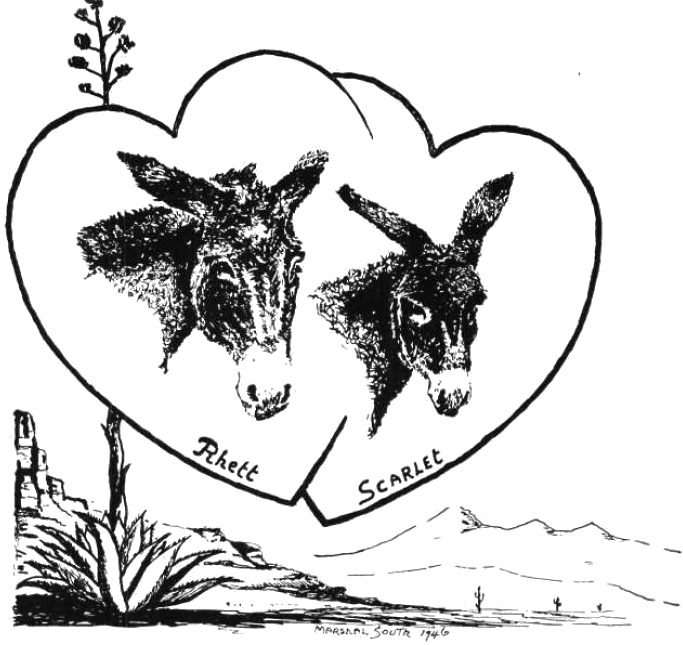
![]()
1949 January |
Mono Lake - Mono Crater Activity The possibility that one of the Mono craters was "letting off steam" was to be investigated by members of the U. S. Forest Service. Friday, October 15, Neal Rahm, supervisor of the Inyo National Forest, noticed that steam, smoke and what appeared to be ashes were being emitted into the sky from high on the north side of one of the craters near the Benton road. He told his hunting companions, Howard Shebley of the Inyo-Mono game warden patrol and Walter Shannon of the state fish and game patrol. The three of them saw a renewal of activity later in the afternoon but, since it was the last day of the deer season, continued hunting and planned to investigate the crater later. |
1949 March |
Inyo - Campers Must Pay Fee National Forest Service headquarters has requested all regional foresters to put a representative group of camp, picnic ad winter sports areas on a charge basis at the beginning of the 1949 vacation season, to determine whether recreational forests should pay part of their own way. This year's experiment will embrace 10 heavily-used camp and picnic areas out of a total 1,100 of national forests in California. The schedule of charges is as follows: Camping - 50 cents daily per car party of not more than six persons, or $3 per week. For parties of more than six persons an additional 10 cents daily per person of all above six, but no charge for minors under 12 years; Picnicking - 25 cents to 50 cents for party of not more than six per day. Five to 10 cents extra for each person above six but no charge for minors under 12. The proposed charges will be for the use of facilities and not for entrance to national forests. Many small camps and picnic areas will be free. |
1949 April |
Inyo - U.S. Vanadium Despite the burning of a tramway tower early in February, development work at U. S. Vanadium's tungsten mine is being continued on a seven-day-a-week basis according to Manager D. D. Baker. The company has a 25,000 ton stockpile, and expects to have its Zero tunnel on a production basis by the time this stockpile is processed. |
1949 September |
Bishop - "Gambling Den" Uncovered The University of California archeologists believe they have proven that prehistoric Indians had their vices. At least they have discovered an alleged underground gambling den, its 45-foot main room complete with a large wall mural. The gaming establishment of the aborigines was located in Tommy Tucker cave, in Lassen county about seven miles from the Nevada line. Entrance to the cave is 200 feet up the side of Hone Lake Valley, is effectively concealed from the valley floor. Indian artifacts found in the gambling house have been turned over to the Museum of Anthropology on the university's Berkeley campus. Most numerous artifacts in the cave were short wooden sticks sharpened at one end. The archaeologists believe these were used as counters in various gambling games. Other gambling equipment included dice and matched tubes made of bone for shaking the dice. The mural was a series of primitive pictographs painted on a smooth space eight feet long and four feet high. Artifacts unearthed included fragments of baskets, sandals arrow points, an awl and a needle, bone ad shell ornaments. |
![]()
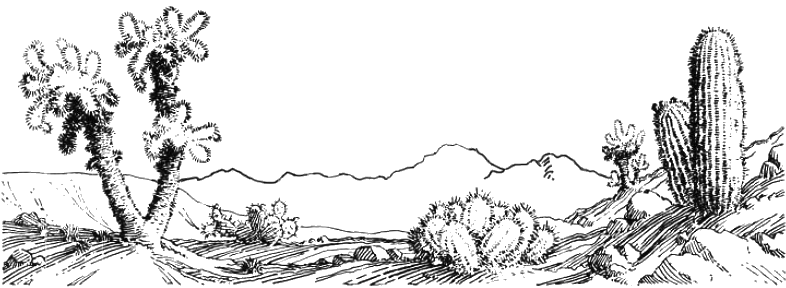
![]()
1950 January |
Bishop - 1st Annual Pioneer Horseback and Wagon Trek "The First Annual Pioneer Horseback and Wagon Trek from Lone Pine to Death Valley" departed from Lone Pine in time to reach Desolation Canyon for the '49er pageant. Sponsored by Bruce Morgan, the caravan included many vehicles of ancient manufacture, Morgan hopes to repeat the 8-day trek year after year. |
Inyo - Pheasants Planted for Hunters Prior to opening of the hunting season in the Owens Valley area, more than 3,000 pheasants were planted to give hunters more birds to shoot at, according to Arthur L. Hensley, district game conservationist. It is believed that predators - coyotes and bobcats - kill a great many of the planted birds. |
|
1950 February |
Inyo - Antelope Herd Planted Taken from Lassen County, 100 antelope have been planted in the Adobe Meadows area of Mono County. The swift animals were herded by airplane, caught in a specially constructed rope trap, then lifted bodily into large trucks for the trip to Mono County. |
||
1950 March |
Little Lake - New Mining Activity This small community between Mojave and Lone Pine is the site of a new mining activity based on a deposit of volcanic building ash. It is believed to be one of the few commercially exploited deposits on the west coast. Building blocks made of the ash are light, but strong. They present an attractive burnished red color for both interior and exterior work, are resistant to earthquakes and provide natural insulation, it is claimed. The ash is mined from flats around the volcanic hill cone which, geologists believe, spewed forth one of the latest lava flows in that part of the desert. |
||
1950 August |
Independence - Cattlemen Oppose Fishing Project Cattlemen of Owens Valley are opposed to a sportsmen's project which calls for expenditure of about $1000,000 for the establishment of a series of warm water lakes along the Owens River. The lakes would provide sport fishing and feeding grounds for ducks, quail, pheasants and other wildfowl. The plan is proposed by valley sportsmen ad representatives of the state division of fish and game. Opposition is based on the theory that cattle ranges along the river would eventually be ruined. |
||
1950 September |
Bishop - Pheasants Reared for Hunters Four Hundred Mongolian pheasant chicks are being reared at the Rainbow Club pens here for release this fall prior to opening of the pheasant hunting season. Approximately 50 percent are cocks. This will raise the total scheduled to be released in Inyo and Mono Counties to 2,700. |
||
1950 October |
Bishop - More Trout for Fisherman Construction of the Fish Springs rearing ponds this fall is apparently assured with allocation by State Wildlife Restoration board of $352,000 for the project and opening of bids on September 26. The aim is to raise fingerling trout in time for 1951 planting. It is hoped the ponds will be turning out catchable-size trout in 1951. |
||
1950 November |
Lone Pine - Owens Gorge Electric Power Steel towers are now being erected along Highway 395 as part of the $42,000,000 Owens Gorge electric power project of the City of Los Angeles. Engineers found it necessary to drill five miles of tunnels to make the power installation. To generate 112,500 kilowatts of electricity, water will drop 2,375 feet from Crowley Lake to Bircham Canyon. |
Lone Pine - Wilderness Beauty Preserved Members of the Sierra Club - mountain climbers, hikers and conservationists - received high praise from Inyo National Forest Supervisor Neal M. Rahm and Regional Forester P. A. Thompson at conclusion of the club's 1950 Sierra Club High Trip. The trip lasted 36 days, was divided into three 10-day periods with brief rest periods in between. The extent to which members of the Sierra Club go to preserve the natural beauty of the wilderness was a pleasant surprise to the forest officials, they said. Club members ranged in age from 8 to 70, no one on the trip offered or expected special privileges. What impressed forestry personnel was the club's clean camps and efforts to preserve the natural state of areas used. |
|
1950 December |
Bishop - The Rossi Tungsten Mine A old Rossi tungsten mine near Bishop has been taken over by Frank Phillips and James Birchim who are retimbering the mine preparatory to resumption of production. The Rossi is worked through an inclined two-compartment shaft. The mine contains soft scheelite ore. Indications are that tungsten mining is regaining its war-time importance in Inyo County, California's principal producer of the vital strategic metal. Producers are reported receiving about $28 per unit for scheelite ore averaging 60 percent tungsten. Demand has been accelerated by stoppage of imports from China, by the U.S. Rearmament Program and increased steel production. Active tungsten mines in the Bishop region include the Pine Creek property of the U.S. Vanadium Corporation and the Yaney mine, operated by R. W. Adams and B. W. Van Voorhis. |
||
![]()
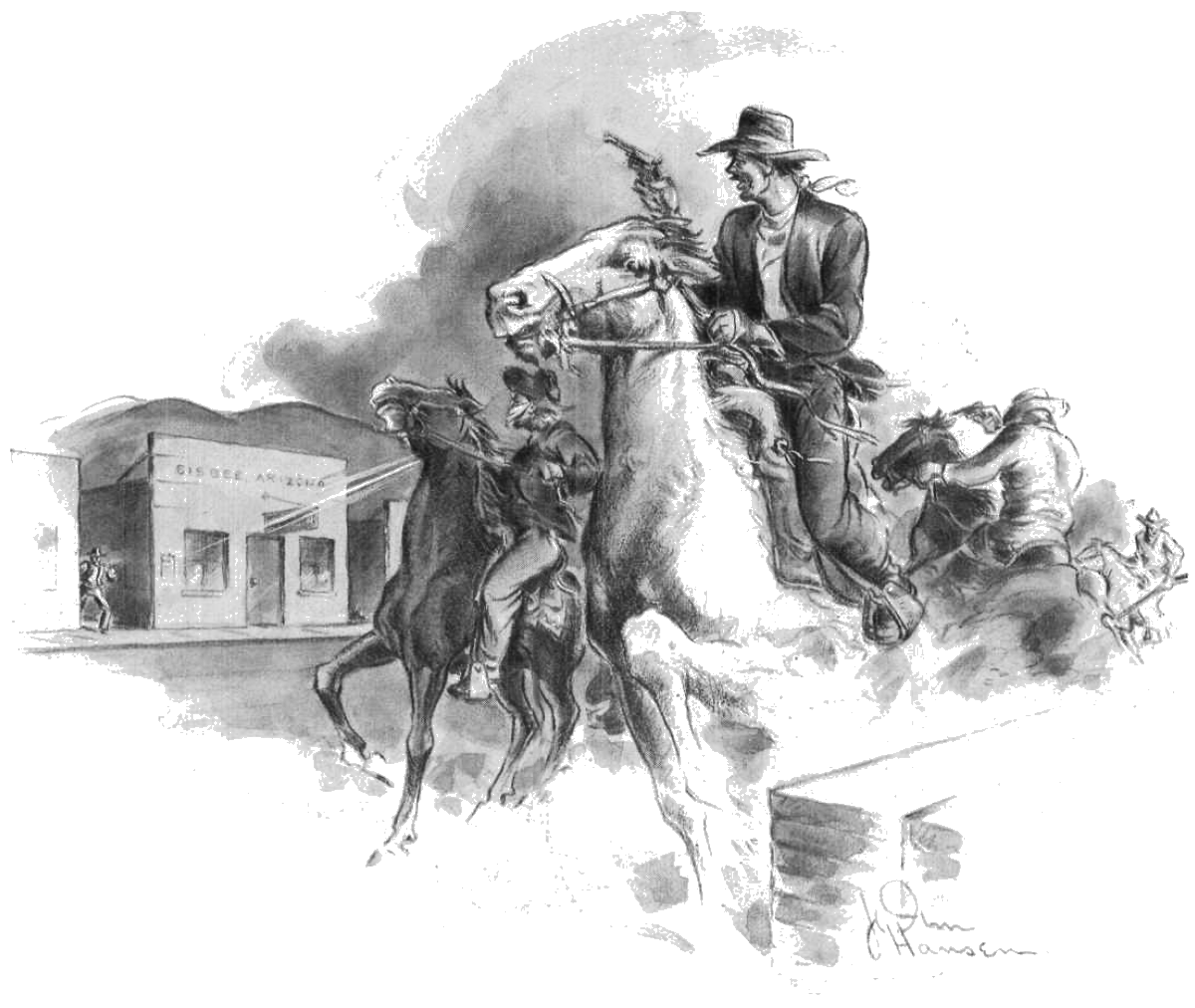
![]()
1951 January |
Darwin - Lead-Silver Shipments Regular shipments of lead-silver ore are being made from the Minnietta Lead Mine, on the est slope of the Argus range and about 10 miles from the Panamint Springs resort. The ore is going to the Selby smelter of the American Smelting and Refining Company. The property is owned by Helen M. Gunn, Independence, California, is under lease to Tom Vignich and Ross Finley of Bishop. A unique feature of the mine is an aerial tramway which carries ore from upper workings to a small gravity concentration plant recently completed on the property. |
Bishop - Cloud Seeding is Filmed The entire process of seeding clouds with dry ice to increase precipitation - a new scientific accomplishment that may one day revolutionize agriculture and the livestock industry in the arid Southwest is being recorded on motion picture film by the Moody Institute f Science of Santa Monica. The institute specializes in meticulous scientific films. A five-man crew was sent into the Bishop area to film the California Electric Power Company's cloud-seeding process. The firm has been using a P-38 to spread dry ice in super-cooled clouds over the High Sierras Bishop Creek basin. The object has been to increase snowfall, which in turn provides more water run-off to operate the company's hydroelectric generating plants. The program has been underway three years.. |
|
1951 March |
Independence - Wildlife Enemies Trapped About 157 hunters and trappers accounted for 75,008 fur-bearers and predatory animals during 1949-50 fiscal year says the division of Fish and Game. Enemies included 13,511 coyotes, 5,729 bobcats and 243 mountain lions, costing federal, state and county governments $673,785. Commercial trappers received $266,391 for their annual take. The department transferred 225 nuisance beavers to higher ground. |
Lone Pine - U.S. Tintype Corporation Donald F. McGrew, President of the U. S. Tintype Corporation of Oakland, announced he has made application to the U. S. Bureau of Mines for a $2,500,000 loan to start large scale development on a cassiterite (chief source of native tin) deposit in the Argus Range, New Coso mining district. McGrew claims assays average better than two percent tin, with over 200,000 tons of ore in sight. Fissures show cassiterite to a depth of 150 feet. The new town on the site will be called Thunder Mountain, with jobs for over 100; veterans preferred. |
|
1951 April |
Inyo - New U. S. Vanadium Crushing Plant Completion by January was scheduled for a new crushing plant which will be an expansion of the U. S. Vanadium mill in Pine Creek Canyon. The new unit will make it possible for the firm to process scheelite and powellite ores from eastern California and Nevada. The first shipment to the mill will be between 1,000 and 2,000 tons of table tailings from the Atolia district. Small lots of tungsten ore are being purchase in the area for processing. |
||
1951 May |
Independence - Museum Housing Appealing to the county board of supervisors for more adequate space and better promotion of the Eastern California Museum, now housed in the courthouse basement, Curtis Phillips of the museum committee, suggested the historic attraction be moved to a new building in Bishop. After suggesting additional space be allotted in the courthouse, he pointed out the museum might receive more attention if located in Bishop. "It could be an asset to the entire county if more room and more attractive hours could be arranged," he said. |
Lone Pine - Ancient Ram's Head Found Nearly 100 years ago, a prospector in the Inyo Mountains east of Independence, California, killed a big horn sheep. Instead of tossing away the horns, he placed them in the crook of a foxtail pine tree. Harold Gates, Lone Pine mountaineer, found them while hunting last fall, the tree having grown well over and around them. According to George Hardman, Nevada state conservationist, the horns were placed in the tree sometime between 1862-69, the tree having begun life about 1700. Gates says horn rings indicated the ram was 13 years old when killed. |
|
1951 August |
Bishop - Uranium Discovery Discovery of a sizable deposit of uranium ore near here was reported recently by officials of the Natural Resources Developing Company of Los Gatos, California. The exact location of the site was withheld, pending tests to determine the extend of the deposit. The company has located other mineral deposits in the Bishop area, and is known to be carrying on an extensive program of exploration in the Inyo-Mono area. While this is the first deposit of commercial grade uranium ore reported in this district, local prospectors have reported finds in the high desert areas in eastern Inyo and Mono Counties. |
||
1951 September |
Bishop - Tungsten Boom With supplies down and demand up, a serious tungsten shortage has developed. Mining men say the current U. S. tungsten boom may see the 4,240 ton output of 1950 doubled by early next year. The shortage has shot tungsten prices up from $23 a 20-pound unit last year to $65 today. Veteran prospectors and an army of eager newcomers are scouring the back country of the west from Montana to Mexico. |
||
1951 October |
Bishop - He Wants to be Alone An Inyo-Mono realtor has received the following letter: "I am looking for some mountain property ... 1/4 acre or less in a remote location with no neighbors for miles. I would like a small one or two room house on this land. House does not need to have running water, electricity or inside plumbing. I want a very rough place ... I was thinking of some old ghost town property. water must be available and the house able to be made livable. The harder to get to, the better ... I will pay $400 cash for such a place, or more if necessary." Can anyone help? |
Inyo - Burro Falls 700' and Lives A pack burro, belonging to Richie Conway of Lee Vining slipped on the shale rock and fell 700 feet down a slide on the trail to Mt. Hood. The animal was uninjured. Conway said that he had been using the same trail for 25 years and it is the first time a burro has lost its footing. |
Bishop - Excavator Digs up Past Wendell Reynolds of Bishop, while excavating gravel in the Owens River bed, recently unearthed a fossil which Douglas Robinson, veteran Inyo-Mono historian and student of fossils has pronounced to be part of an elephant tusk. This elephant roamed the Inyo-Mono country 10,000 to 15,000 years ago, according to Robinson. |
1951 November |
Inyo - Diamond Drilling at the Leviathan Sulphur Mine Diamond drilling is reportedly under way at the Leviathan Sulphur Mine near Markleeville in Alpine County. According to a report in Mining and Industrial News, the work is being done under contract for Anaconda Copper Mining Co., which may reopen the mine in the near future. Leviathan was operated during World War I and is said to include a huge underground deposit of sulphur. In 1948, shipments were made from the property by Texas Gulf Sulphur Co., operations being handled by Siskon Mining Corp., a subsidiary. |
||
1951 December |
Mono Lake - Extinct Volcano Mining A new type of mining project is being developed on the north shore of Mono Lake, California, at a spot five miles north of Lee Vining known as "Black Point Cinders." The Black Point is an old extinct volcano, much older than the famous chain of 21 Mono craters located three miles from the U. S. Highway 395 near Lee Vining. The claim is made up of small black volcanic cinders. Each cinder is composed of tiny air cells, sealed from each other so no moisture can penetrate them. Their lightness and insulating qualities make these cinders a superior building material. The owners plan to sell the cinders to the building block trade and for cement construction. Shingle manufacturers now are experimenting with the Black Point cinders and expect to use them in future construction |
Bishop - Mier Escapes Blast If prizes were handed out for the luckiest man of the year, Harry Willis, employee of the Hanging Valley Tungsten Mine, would win hands down. Willis was trapped in the mine west of Bishop when 50 rounds started exploding. He ducked behind timbers and his two partners later rescued him. He suffered only minor bruises. |
|
![]()

![]()
When Lead was Mined at Cerro Gordo
By A. La Vielle Lawbaugh
Desert Magazine - March 1952
![]()

![]()
1952 January |
Bishop - Sierra Club Scales Peaks Two peaks east of Panamint Valley were scaled recently by 58 Sierra Club hikers. Kenneth Rich of the Desert Peak chapter at China Lake captained the group in its climbs of Coso Peak, elevation 8,100 feet, and Maturango Peak, elevation 8,850 feet. It is believed that this was the largest single party ever to scale these peaks. |
1952 February |
Bishop - Indian Legislation Outlined Proposed legislation which, if passed, would provide greater citizenship rights for California Indians, was presented by members of the Indian board of trustees at a meeting of Bishop area tribes. The legislation would eliminate certain restrictions which exist on lands now held by Indians and would offer the Indians clear titles to their lands. If hardship cases existed, debts o irrigation systems built in Indian country would be retired. Under the proposed law, Indians between 21 and 50 years of age would be subject to taxation. |
1952 June |
Independence - Inyo Tungsten Deposit What gives reasonable promise of being one of the world's most valuable tungsten deposits, on the west slope of the Inyo Mountains east of Independence, now is being opened through completion of an access road which "couldn't be built." Not long ago, engineers spent almost $25,000 surveying the area to decide if a road to the tungsten-rich Jumbo Mine was impossible. By April, after little more than one year of work, the road was nearly to the mine adit. |
1952 July |
Las Vegas - Bruce Morgan's 20-Mule Team to Las Vegas A 20-mule team and wagons arrived for the Helldorado celebration in Las Vegas after an eight-day drive across the desert from Death Valley, California. Before leaving Furnace Creek Lodge in Death Valley, the wagons were loaded with borax, just as the original wagons were loaded in the early days. Skinner was Bruce Morgan, operator of the stables at Furnace Creek for the Pacific Coast Borax Company, sponsor of the team. |
1952 August |
Death Valley - Death Valley Days TV The Pacific Coast Borax Company re-opened the Furnace Creek Inn during the month of June to provide lodging for a troupe of 70 players engaged in preparing a television broadcast of "Death Valley Days" which formerly ran as a popular serial on radio. The scenes for the new TV series are being photographed by Gene Autry's Flying A Productions, and it is understood they will be presented this fall, with Pacific Coast Borax again as the sponsor. |
![]()
 |
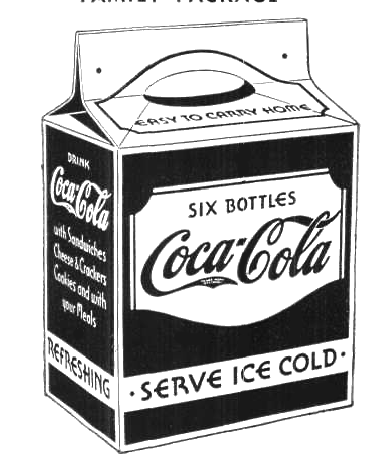 |
![]()
1953 January |
Bishop - Deer Killed in Death Trap Twenty-six deer met a tragic death in the High Sierras during November when in passing over an icy saddle north of Bishop Pass they slipped and fell 150 feet to the rocks below. Al Baxter, instructor at Deep Springs school came upon the death trap and reported it to Fish and Game officials in Bishop. Fred Jones, assistant game manager, immediately packed into the area and confirmed the report of Baxter. It appeared, he said, that the deer coming out of the back country ahead of an approaching storm slipped on ice which had been covered by newly fallen snow where the slope was 45 degrees. Bloody trails leading away from the trap indicated that a few deer had survived the fall, Jones said. |
||
1953 February |
Bishop - Elk Herd Increasing There are now 220 Tule elk in the Owens Valley according to a count recently made by airplane by the California Fish and Game department. The figures represent an increase of 23 elk during the past year. The census showed 40 bulls, 92 cows and 28 calves, the remainder being unclassified. The biggest segment of the herd was seen in the area from Division north to Red Mountain. |
||
1953 March |
Bishop - Sierra Growing Higher The Sierra Nevadas are getting higher and higher, and it's a good thing for California, a University of California at Los Angeles geologist reported after completing several years' study of the eastern slope of the mountains near Bishop. Dr. William C. Putnam claimed the mountains have given California its prosperity, serving as they do to stop rain-bearing clouds from going farther west. The geologist admitted their growth is accompanied occasionally by earthquakes such as those last summer. |
||
1953 April |
Bishop - Campground Improvement The neglected campgrounds of Inyo National Forest may be improved, if a bill now before Congress is passed. The proposed Baker bill would provide ten percent of Forest Service receipts for sanitation, wildlife habitat and development purposes of the national forests. California forests receive $60,000 for recreational use under the present allocation; the Baker bill might raise this figure to $1,000,000. Forest campgrounds in the Inyo-Mono area at present are so short of funds that voluntary donations have been necessary to keep them open to the public. |
||
1953 June |
Lone Pine - Remnant of the Past Paleontologists have identified a tusk found in a clay pit near Lone Pine as that of an Imperial Mammoth that lived 15,000 to 20,000 years ago. the tusk, found by Los Angeles Department of Water and Power employees working in Owens Valley, will be placed in a museum at Lone Pine. |
Bishop - U.S. Vanadium Corporation U. S. Vanadium Corporation, the nation's largest tungsten producer, is operating its Pine Creek Mine and mill at capacity of scheelite daily. The company has been buying lowgrade tungsten ores from independent producers since July, 1951, providing a market for many small operators in Inyo County. Substantial amounts of copper and molybdenum are recovered as by-products in treatment of the scheelite ore. |
|
1953 July |
Lone Pine - Protest Federal Land Grab Protesting what they term a"federal land grab," civic groups in Bishop, Independence and Lone Pine are seeking to block the effort of federal agencies to withdraw the vast acreage in Saline Valley and establish it as an aerial gunnery range. It s pointed out that area contains valuable mineral lands, and that its closing to the public would end all prospecting in this region and would close roads which serve other mining interests. State Senator Charles Brown has given assurance that the California State Lands Commission would not approve the federal withdrawal until interested citizens have been given a hearing. |
||
1953 August |
Inyo - Game Prospects Reported Good One of the best game seasons in years is predicted by Art Hensley, game manager of the Inyo-Mono area. A mild winter, good nesting conditions and an excellent feed situation promise more game when hunting seasons open this year. According to Hensley, pheasant, quail and chukar hatches have been good, and the Owens Valley will have an abundance of doves when the season opens on September 1st. |
||
1953 September |
Fort Independence - Tagged Pheasants Released More than 250 adult pheasants, including 18 roosters and hens, were released in the Fort Independence area in July by the California Department of Fish and Game. The group is specially tagged, and a follow-up study will be made during the open season to determine the survival and the take by hunters. More pheasants will be released later. |
Inyo - Inyo-Mono Streams Protected Governor Earl Warren has signed Senate Bill No. 78, requiring that water be left in Inyo-Mono streams for the preservation of fish and wildlife. The new law is designed to prevent drying up of streams, as occurred recently in the Owens River Gorge. |
|
1953 November |
Lone Pine - Improving Hikers' Hut The Smithsonian Institution cabin atop Mt. Whitney, the nation's highest peak, will be improved under a project which was scheduled to start early in September. The hut was built in 1909. Open to the public, it is used almost entirely as a shelter and registration station for persons climbing the mountain. The repair job will consist of replacing doors, windows, masonry and weatherproofing the building. |
Lone Pine - Claim Roads Create Problem Promiscuous filing of mining claims without proper development is creating a serious problem, Al Nikolaus told members of Inyo Associates at a meeting in Lone Pine. "When the roads to many of the claims are completed, and claims prove worthless, the roads remain and must be maintained by federal law," he explained. "These roads not only burden the government with their maintenance, but they open wilderness areas to truck and automobile travel and endanger wildlife." |
|
![]()
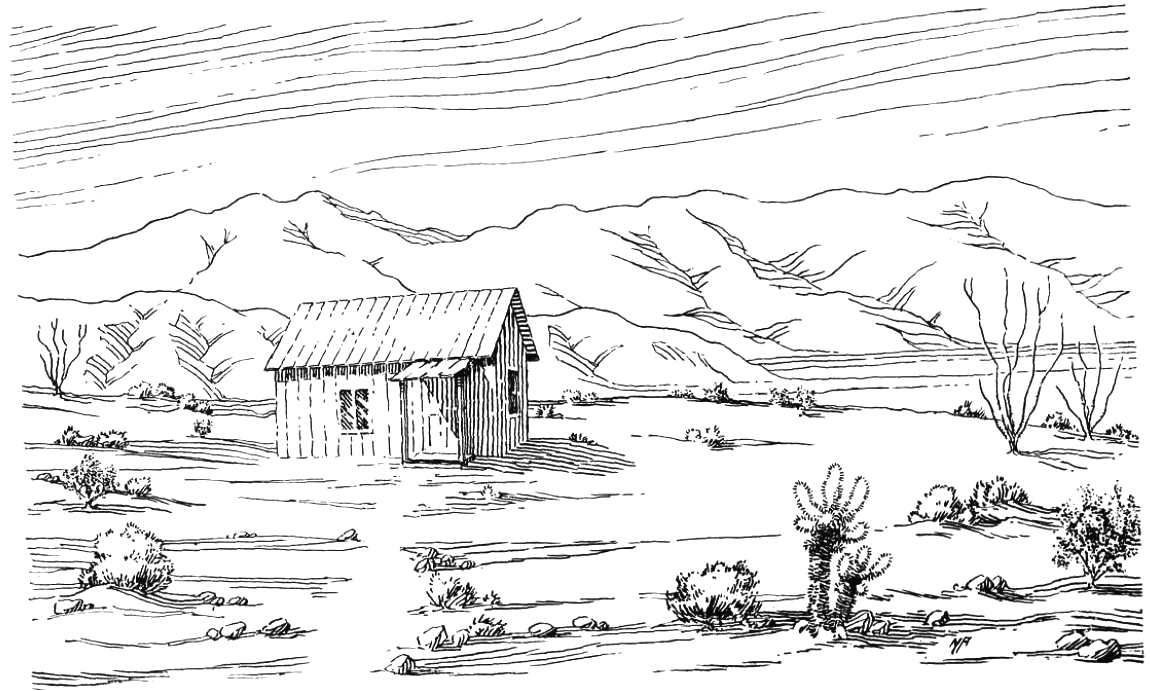
![]()
Trail to Keynot Summit
By Louise Top Werner
Desert Magazine - April 1954
![]()
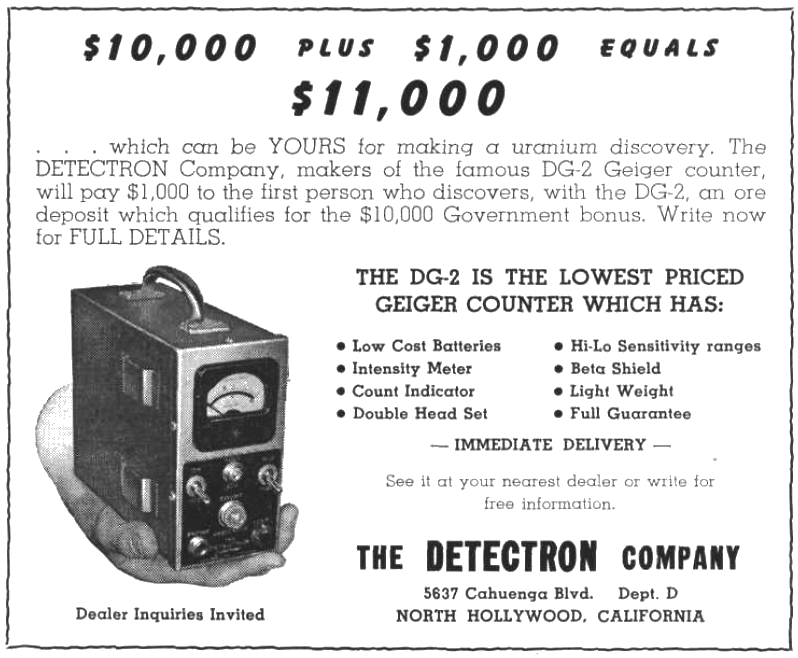 |
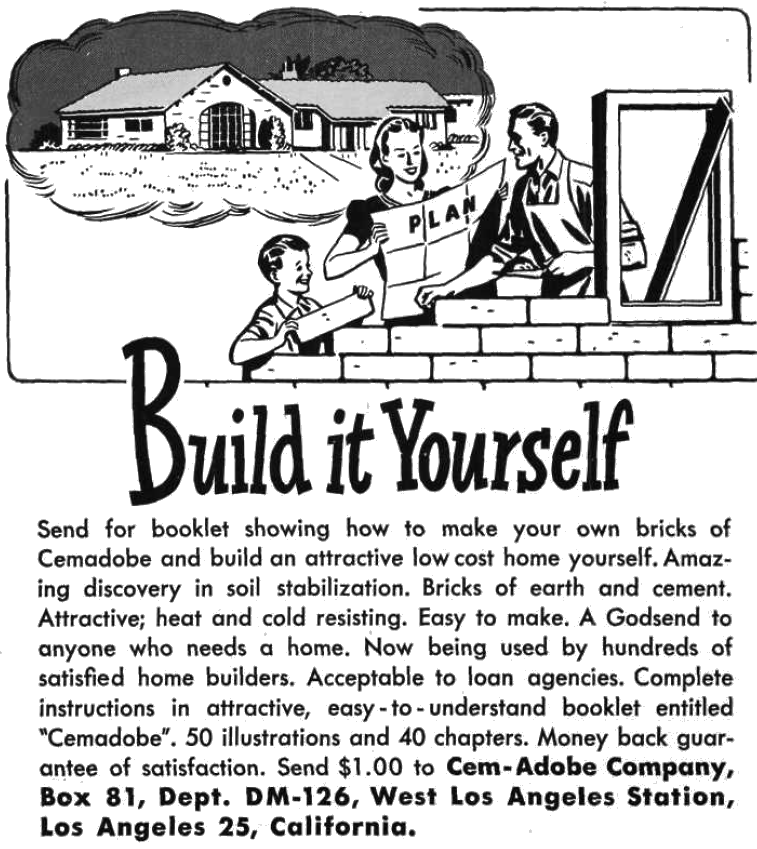 |
![]()
1954 January |
Bishop - New Method for Treating Tungsten Ores Contact Development Company has introduced a new method of treating tungsten ores in the Bishop region. The company moves its portable mill, mounted on skids, to various deposits to concentrate ores. Use of such mobile plants is expected to spread rapidly to other tungsten areas, as the portable units make possible treatment of ore from small deposits where scheelite is not sufficiently rich to warrant shipment to custom plants. |
||
1954 April |
Inyo - More and Better Camps Public campgrounds throughout the Inyo National Forest will be in better shape this year, thanks to a generous government appropriations and special $10,200 allotment voted by Congress last summer. According to W. S. Davis, National Forest supervisor, the funds are being used for the construction of new camp tables and rest rooms, the repair of existing camp facilities and water systems, digging of garbage pits, rock-barrier construction and other needed improvements. |
||
1954 May |
Keeler - Narrow Gauge Goes Modern with Diesel Locomotive Most of the country's narrow gauge railroads have gone out of business, but not Southern Pacific's little three-foot branch line running from Keeler to Laws. It's going modern with a brand new made-to-order diesel locomotive. An order as been placed for a five-ton, 450 horsepower diesel to be delivered in September to replace the venerable steam locomotives now in operation on the famous old 71-mile slim gauge line. The newer of the two retiring engines, built in 1911, will be retained for emergency use. The Keeler-Laws line was built 73 years ago as part of the 300-mile Carson & Colorado Railroad which extended from Keeler to a connection with the now defunct Virginia & Truckee Railroad at Mound House, Nevada. The Carson & Colorado was acquired by S.P. in 1900 and, as traffic from mining areas dwindled in later years, one portion of the line after another was abandoned until only the Keeler-Laws unit remained. |
||
1954 June |
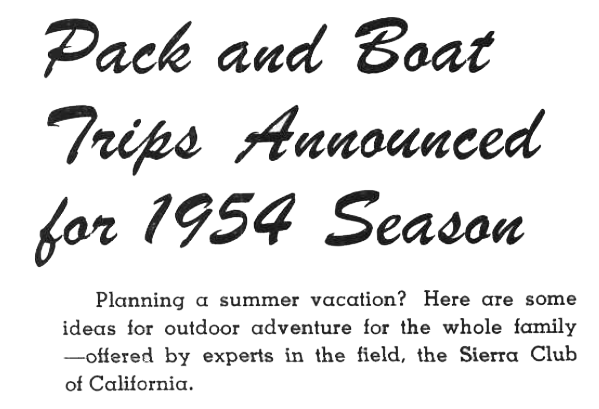 |
Mammoth - Mono Craters Monument A Forest Service field survey of the Mono Craters south of Mammoth may be made this summer, according to Mr. and Mrs. John Haddaway who are leading efforts to establish the craters area as a national monument. The Haddaways have organized the Save-the-California-Seenery Society at Mammoth in the interests of preserving the natural beauty of the Mono Craters. |
Lone Pine - Museum Group Gets Kilns The old charcoal kilns south of Lone Pine, which played an important part in the early development of Inyo County, have been presented to the Eastern California Museum Association by the Columbia-Southern Chemical Corporation. The grant included a 1 1/4 acre parcel of land on which the kilns are located, with the right of access to the property from Highway 6-395. The kilns were built nearly 85 years ago to furnish charcoal for the famous Cerro Colorado lead-silver mine in the mountains above Keeler. |
Bishop - 1954 Sierra Club "High Trips" Announced |
|||
1954 July |
Inyo - World's Largest Jeffrey Pine For some time, personnel of Inyo National Forest have believed that somewhere in the Inyo-Mono area there existed a larger Jeffrey Pine than the 7-foot diameter champion in the San Bernardino Mountains. This spring they found the record-breaker - a large pine along Highway 395 and Rock Creek, two miles south of Tom's Place. It measures 23 feet 2 inches around at chest height, giving it an average diameter of 7 feet 4 1/2 inches. Officially recognized by the American Forestry Association as the champion of its species, the tree is vigorous, sound and fast-growing. Forest Service rangers state it eventually will attain much greater size. |
Bishop - Leave Nature its Own With one swift plunging blow of its sharp hooves, a deer can kill a coyote or a hunting dog. It can also kill a child or seriously injure a grown man. For this reason alone, advises the California Department of Fish and Game, it is foolhardy to take a fawn home from the woods to make a pet of it. Another good reason is the possible fie of $500 and six months in jail. The deer is a wild animal, the Department points out, and it never can be completely tamed, even with the wisest care. And the wobbly fawns that soft-hearted people "save" in the woods are usually not orphans at all. If not carried away by some well-meaning vacationist, their mothers soon will come back to raise them into the strong free creatures of the forest that Nature intended. |
|
1954 October |
Bishop - Burro Refuge Undomesticated burros that roam the desert may soon have a California refuge they may call home. An interim committee of state legislators heard testimony at a Bishop meeting this summer that burros are making a nuisance of themselves on cattle ranges and a recommendation that a 300,000 acre sanctuary be established for them. Virgil L. Bottini, Bakersfield, bureau of land management chief for 13 Southern California counties, suggested the sanctuary be in Inyo County's Saline and Panamint Valleys, west of the Argus Range and south into San Bernardino County. The burro population of Inyo County was estimated at "several hundred." The committee will make recommendations at the next session of the legislature. An emergency measure, which expires in mid-September, 1955, was passed in the last session protecting the burro from ruthless slaughter. Violators can be sentenced to one year in jail, fined $1000 or both. |
||
![]()
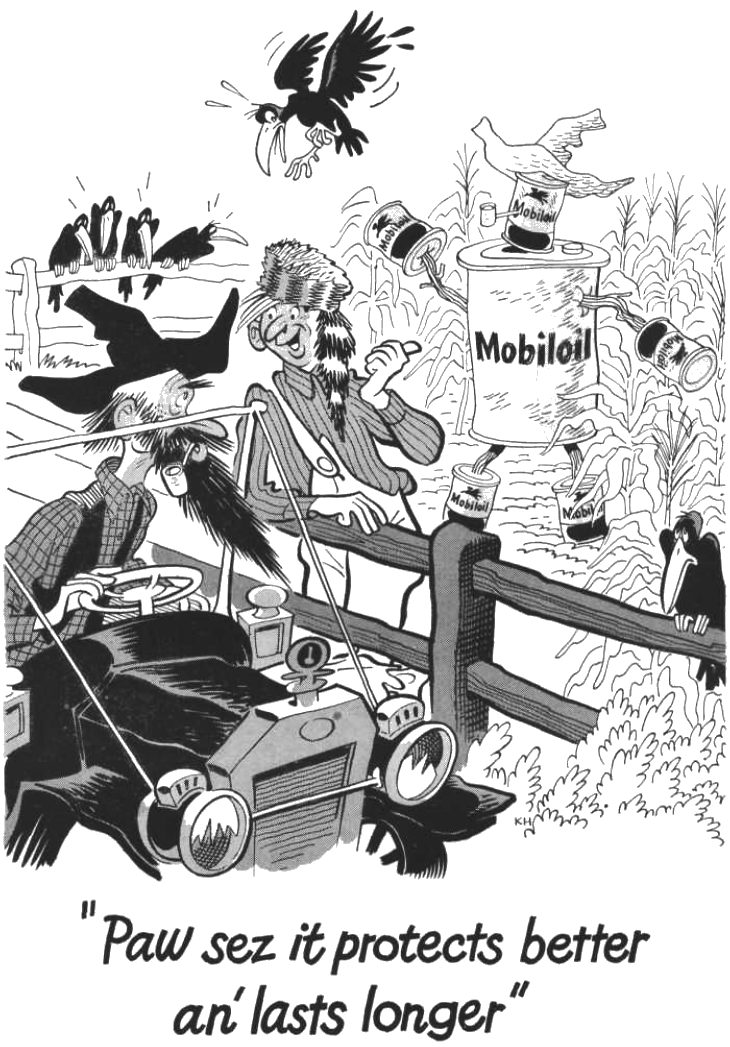 |
 |
![]()
1955 February |
Bishop - Indians want Freedom Indians of California's Owens Valley favor termination of federal control over lands being held in trusteeship for them by the government. But they approve with reservations. The Indians want a government lien against their lands to be cancelled. The exact amount of the lien has not been established, figures ranging from $116,000 to $200,000. It was placed after the government paid for construction and improvement Indian lands in the mid-Thirties. The tribesmen also want their reservation roads and domestic and irrigation lines extended and repaired before the withdrawal of the Indian Bureau from California and termination of federal supervision over their lands. |
|
1955 March |
Bishop - New Mill in Operation Now in operation is the new mill at the east edge of the Four-Mile flat along U.S. 50. Tungsten concentrates are being shipped from the mill to the Vanadium Corporation plant near Bishop, California. Construction of the mill started last summer at the site of the old Sand Springs stage station on ground bought from the Summit King Mines, Ltd, where water is available. Owners are John Olson and Fred Bennet, of Los Angeles. |
|
1955 May |
Independence - Tulare Backs Highway Through the High Sierra Joint action by Chambers of Commerce in Tulare County favoring the completion of Highway 190 from Quaking Aspen Camp in Tulare County to Lone Pine defeated another move for a second trans-Sierra highway until the first is completed. A new Mammoth Pass route in Madera County across the Sierra had been planned, but members of the Chambers decided to let nothing disturb the priority of the Route 190 project. |
|
1955 June |
Inyo - New Law Terminates Government Control of Many Indian Tribes Less government control of Indian affairs was one major development in the Bureau of Indian Affairs during fiscal 1954, Secretary of the Interior Douglas McKay said in his recently released annual report. Public Law 280, passed during the year, brings most Indian lands in California, Minnesota, Nebraska, Oregon and Wisconsin under the criminal and civil jurisdiction of the states, while recommendations to drop all Federal supervision over certain groups of Indians were not acted on during the year, except in the case of the Menominee near Green Bay, Wisconsin. The Menominee was given until December 31, 1958, to prepare for termination of trusteeship and special services and to develop tribal plans and programs. According to Secretary McKay's report, other termination bills were enacted after the fiscal year. These covered the Klamatbs and the coastal Indians of Oregon, small bands of Utah Indians, the Uintah-Ouray group and the Alabama Coushatta tribes of Texas. A congressional bill to transfer all of the Bureau's health activities to the United States Public Health Service passed after the fiscal year, but another move to transfer the agricultural extension program to the Department of Agriculture failed to pass. Three outstanding Indian problems were noted in the report as having held Commissioner Glenn L. Emmons' attention. These were: (1) accommodation of all Indian children of school age at the earliest possible date, (2) provision of better health protection or preventive medicine service in Indian homes and communities, and (3) creation of greater opportunities for Indian economic advancement. On the Navajo Reservation the Navajo Emergency Education Program was organized with a goal of providing accommodations in 1954 for 7000 more children than the 14,000 already enrolled. The plan, already in effect and due for completion in 1955, is to enlarge existing schools on and off the reservation, build new schools, place children in public schools in large towns on the fringe of the reservation, build dormitories to house children and send trailer schools to the more isolated communities. Preventive medicine activities were expanded, the report reveals, and by the end of the year 58 hospitals were in operation with a total authorized bed capacity of 2840. Secretary McKay planned economic aid by organizing a non-profit corporation to conduct privately-financed economic surveys with an eye toward providing increased economic development and Indian employment chances in and around several of the major reservation areas. During the year, 2165 Indians were directly assisted to relocate under the Bureau's relocation program. This included 1649 persons in more than 400 family groups and 514 unattached men and women. In addition, more than 300 left without assistance to join family and friends. Income to the Indians from mineral leases, principally oil and gas, reached an all time high of more than $34,000,000, about 36 percent higher than the 1953 figure. Of the 667 miles of reservation roads graded or surfaced during the year, 487 miles were transferred to county highway departments for maintenance. |
|
| Independence - Uranium Property Sale The first sale of uranium property in Inyo County, California, was reported recently when 12 claims brought $100,000. Inyo County Recorder Richard Oyler reported nearly 200 claims were filed in two days of business early in April. The first property sale was about six miles southeast of Grant, 24 miles south of Lone Pine. |
||
1955 September |
Bishop - Tungsten Production Tungsten production at Black Rock Mine and mill north of Bishop was increased from 200 tons daily to between 400 and 500 tons, the Wah Chang Mining Corporation announced. The production boost was made possible by the completion of a 12 mile power line from the Owens River Gorge to the mine site. The company also made known that is mine at Tempiute in Lincoln County, Nevada, is now on a six day a week schedule and producing 825 tons of tungsten ore daily. The Tempiute mill is on a seven day week schedule and is treating a capacity of 700 tons per day. |
Sierra Nevada - Atomic Power Will Make Dams Obsolete Should the federal government spend millions of dollars in dams for the production of hydroelectric power if atomic energy will make them obsolete in the next 50 to 100 years? This question was asked during recent Congressional hearings on the Upper Colorado River Basin reclamation bill. Opponents of the Upper Basin legislation took the position that the time is fast approaching when atomic energy will largely supplant hydroelectric power. Representative Carl T. Durham, vice chairman of the House-Senate atomic energy committee predicted that within two years atomic power will be produced as cheaply as energy from oil, coal or water. Floyd B. Odlum, Atlas Corporation president, expressed the opinion that by 1975 a major part of the electricity in the nation will be generated by uranium based plants. |
1955 October |
Visalia - Trans-Sierra Road Urged Road committeemen from various Tulare County chambers of commerce unanimously voted to place the trans-Sierra Highway from Porterville to Lone Pine in the top priority category. Attending the Visalia meeting was Earl Scott, state highway engineer, who told those present that his office has been instructed to make a survey of the route for presentation in Sacrament by December 6. This survey is the result of State Senator Charles Brown's resolution passed by the Senate at the recent session of the legislature. |
|
1955 December |
Inyo - Charcoal Kilns Monument Charcoal Kilns, the beehive-shaped kilns made of adobe brick and used to convert timber into charcoal for the furnaces of the Cerro gordo mines high in the Inyo Mountains, have been dedicated as State historical monuments. The Kilns were operated over 80 years ago on the shores of the now-dry Owens Lake near the point where Cottonwood Creek emerges from the mountains. |
|
![]()
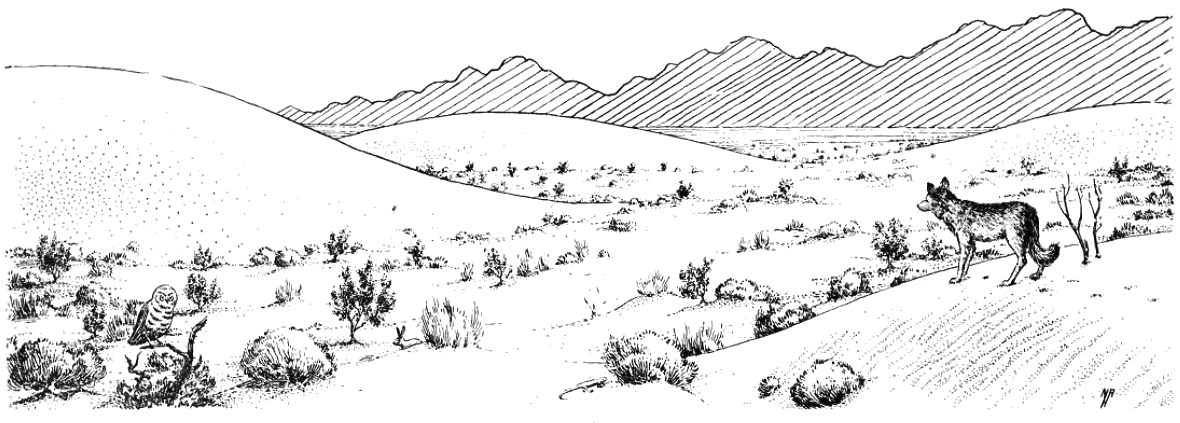
![]()
1956 February |
Lone Pine - Mining Threatened Saline Valley and other areas threatened with mining closures through military acquisition, came in for outstanding support at the recent Western Governors Minerals Policy Conference. The governors recommended that Congress investigate Federal lands withdrawn from mineral entry to determine whether some could be returned to private owners. They also recommended that hearings be held before future land withdrawals and that further withdrawal should be opposed. |
Lone Pine - Alabama Hills State Park A representative of the Department of Parks and Beaches was in Lone Pine recently to investigate the possibility of establishing a state park in the Alabama Hills. Numerous local organizations have been actively urging creation of a state park at the Alabama Hills since 1948. |
Lone Pine - Fossils in the Sierra Nevada Dr. Daniel I. Axelrod, UCLA professor of geology, has completed an extensive study of the fossil plants on the Sierra Nevadas. His research has helped establish approximately when the life zones on the mountains were established; when evolution began to operate in them; and why there is such a diversity of life in the area. Dr. Axelrod's fossil studies indicate that 15,000,000 years ago the range was a gentle slope that reached a height of probably no more than 3000 feet. |
| Lone Pine - Coyote & Bobcat Hunt A two-day Inyo County coyote and bobcat hunt was to be held on January 7 and 8, according to the county board of supervisors. Those registered for the hunt were eligible for a $2 bounty for each animal killed. |
Mt. Whitney - Mt. Whitney Trail Use While use of the Mt. Whitney Trail declined slightly during the past summer, the registration on the July 4th weekend set a new record for that holiday period, figures compiled by District Ranger Roy Saarni showed. A total of 6010 persons registered on the trail during the summer, a decrease of seven percent from the 6470 of last year which was the record season. Approximately 2100 hikers reached the top of the mountain, a drop of 17 percent from the 2519 of the previous summer. |
||
1956 April |
Hot Creek - Huntley Industrial Minerals Expansion Expansion of production facilities of the Huntley Industrial Minerals, Inc., to meet increased demands for non-metallic products was announced this week by Wright Huntley, president. A new crushing, screening and calcining plant will be erected soon about a quarter-mile north of Hot Creek Fish hatchery in Mono County to process high-quality clay from nearby Little Antelope Valley. The deposits are located three miles east of Casa Diablo. For the past four years the Huntley firm has hauled the clay to their Laws mill for processing. |
||
1956 June |
Big Pine - Caltech Telescope Planned A $500,000 twin telescope that may record radio waves from objects farther away than any that can be recorded by Palomar's 200 inch light telescope is to be built by Caltech six miles from Big Pine. Designed to be the world's greatest instrument for decoding the mysterious radio-like waves received from the cosmos, the instrument will consist of two giant radio telescopes, each of which will run on a 2000 foot-long track. |
Lone Pine - Road to Porterville Road The State Highway Commission announced that a highway from Lone Pine across the High Sierra to Springville and Porterville is feasible. It has been estimated that an average of 300 to 400 vehicles a day would use a State highway between Porterville and Lone Pine and Sunday traffic volumes have been estimated at 1000 vehicles for a 24 hour period. |
Desert - Car Cooler Redesigned Frigikar Corporation, 1602 Cochran, Dallas, Texas, announced the addition of new features to its refigerative automobile air conditioner, "Frigiking." The 1956 models will have a new control system, redesigned case, green-dot light on the face of the case that remains lighted only when the unit is refrigerating, and plastic 360-degree directional air control louvers. The unit sells for $298 plus installation. |
| Bishop - Boom Days Ahead for Uranium A solvent extraction process which greatly reduces the cost of processing uranium from Colorado Plateau ores has been perfected by the United States Bureau of Mines. Applicable to acid treatment of ores as distinguished from alkali leaching, the process is a result of research by J. Bruce Clemmer, chief, and J.R. Ross and J.B. Rosenbaum, all of the division of Minerals Technology of the Salt Lake station of the Mines Bureau. "Solvent extract is the coming acid process for routine production of uranium concentrates," Clemmer said. "The inherent flexibility and wide choice of reagents and techniques makes the method applicable to most ores suitable for acid processing." The cost of milling uranium ore has been reduced by more than 30 percent in the last several years, an official of the Atomic Energy Commission said. As a result of new flow sheet development, cheaper processing costs have been attained in the recovery of uranium, W.H. Lennemann, metallurgical advisor to AEC's Grand Junction Operations Office declared. Atomic power scientists estimate that one pound of uranium metal, slightly larger than a one-inch cube, can produce the same amount of energy as 3,000,000 pounds of coal. This power could light the city of Chicago for a full day or the average home for 9000 years -- longer than recorded history. |
|||
1956 July |
Inyokern - Tungsten Mill to Open The Indian Wells Valley Milling Corporation disclosed that it will operate a tungsten mill four miles north of Inyokern on the Donahue-Sturges ranch. Officials in charge of the project were former operators of the Kaweah River Tungsten Company near Porterville, and the reduction mill will be moved to Inyokern from that city. |
||
1956 September |
Bishop - Proposed Mammoth Pass Trans-Sierra Highway Interest in the proposed Mammoth Pass Trans-Sierra Highway is mounting, chamber of commerce officials on both sides of the mountain reported. A State Chamber representative said it was his hope that the Bureau of Public Roads Commission will authorize a survey of the route and costs so that either state or federal agencies can proceed with the project in future years. It was estimated that nearly a million persons live within a 75 mile radius of the western terminus of the route and forecasts indicated two million persons will be in that area within 10 years. |
||
1956 October |
Independence - Blue Star Talc Mine to be Reactivated Huntley Industrial Minerals, Inc., plans to expand its operations by reactivating the Blue Star Talc Mine on Big Pine Creek. The Huntley firm has been doing considerable development work at the Blue Star, stripping the overburden from the talc body, putting in a new road to the mine and rebuilding the bridge over Big Pine Creek. Nearly completed is the firm's new processing plant at Hot Creek in Mono County. |
||
1956 November |
Mt. Whitney- Records Broken Two records were believed broken by Mt. Whitney climbers in August. The first was by Richard Jones of China Lake, three years, nine months old, who is believed to be the youngest person ever to hike to the top and back. The second was set by Bob Lee of Ridgecrest who hiked from Whitney Portal to the top and back in eight hours and eight minutes. |
Lone Pine - Alabama Hills State Park The State Division of Beaches and Parks has opened negotiations for the acquisition of property in the Alabama Hills for the formation of a state park. Most of the land involved is owned by the Los Angeles Department of Water and Power. The state plans a 27,000 acre park in the area. |
|
1956 December |
Bishop - Monoville Disappearing The last traces of the short-lived gold camp of Monoville on the eastern slope of the Sierra Nevada are fast disappearing from the face of the earth, but before they are completely gone a historical marker should be placed at the site of the pioneer settlement, suggests Dorothy C. Cragen in the Inyo Register. The first sizeable strike in the area was made on July 4, 1859 and soon thereafter 2000 to 3000 persons were living and working in Monoville. The town lasted only a few years, however, and when the ledges became lean the inhabitants moved on to newer and better discoveries. |
||
![]()
1957 February |
Lone Pine - Alabama Hills State Park Under Study Proposed boundaries of the Alabama Hills State Park still are under study and will not be pushed through by underhanded methods, the Lone Pine Chamber of Commerce announced in an effort to calm fears that the proposed park would take in far more territory than was originally planned when the Chamber and the Lions Club suggested the project two years ago. The chamber said it was apparent the boundaries of the park as shown on the preliminary map were natural boundaries already in existence: the eastern side of the Alabama, Hogback Creek area, the Inyo National Forest boundary along the foothills, and Tuttle Creek. |
1957 March |
Bishop - Senator Charles Brown Honored Desert pioneer Charles Brown was honored for his 32 years of public service when the new auditorium at the Eastern Sierra Tri-County fairgrounds in Bishop was dedicated in his name. State Senator Brown has been elected to five four-year terms and prior to that served as a Inyo County supervisor. |
1957 July |
Bishop - Bristlecone District The Inyo County board of supervisors took steps to acquire the land in the White Mountains where the bristlecone pine grows. The board's resolution asks for the transfer of the lands from the state to the county so that the pines, reputed to be the oldest living things on earth, can be better protected. |
1957 October |
Lone Pine - Dolomite Marble Mines Approximately $120,000 has been invested by the S.I.T. Corporation in the dolomite and marble mines and mill six miles east of Lone Pine. The new mill has a capacity of 150,000 tons per day of dolomite ad marble. |
![]()
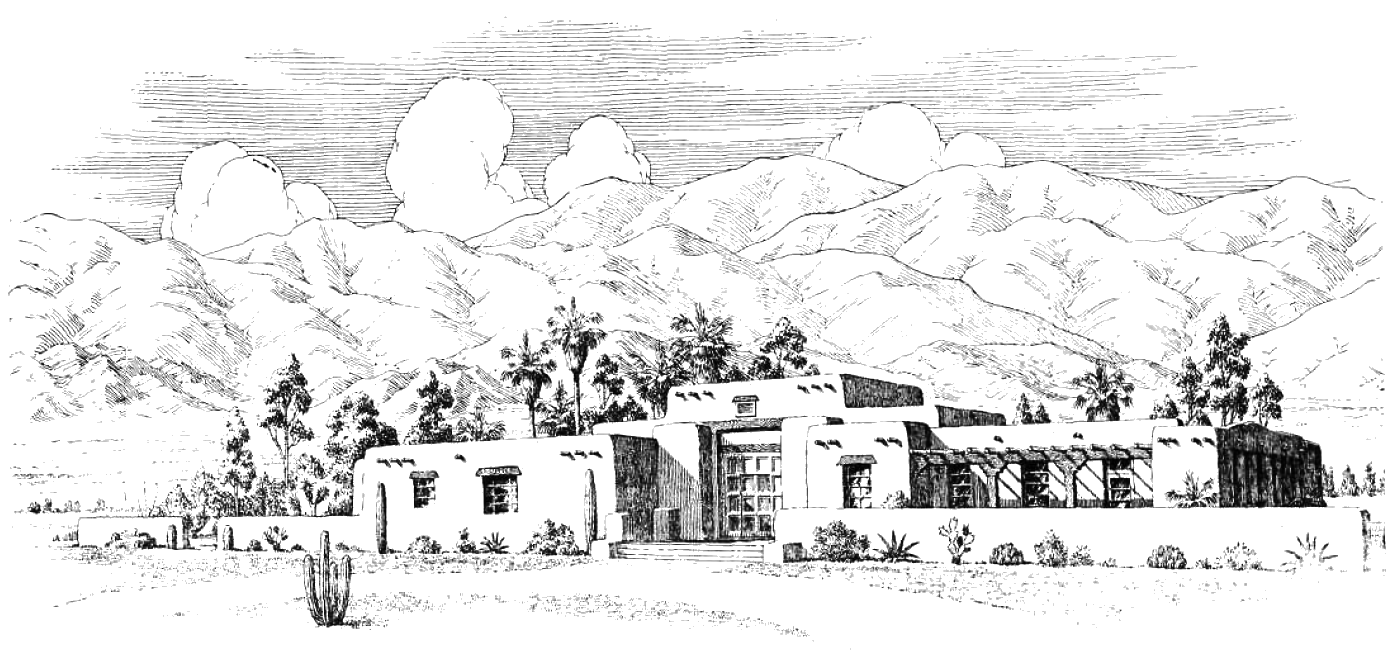
![]()
Saga of Death Valley's Jimmy Dayton
By Audrey Walls Lloyd
Desert Magazine - June 1958
![]()
1958 March |
Lee Vining - Pumice Plant Destroyed The U.S. Pumice Company plant south of Lee Vining was destroyed by fire in December. Loss was estimated at $200,000, and some 20 employees were thrown out of work. Also destroyed in the blaze were shipments of pumice products already packaged ad ready for shipment. The plant was built in 1946. |
Bishop - Rubidium and Cesium Chemical Production American Potash & Chemical Corp. has started production of a series of rubidium and cesium chemicals. This marks the first time rubidium salts have been manufactured in sizeable quantity in the United States, the company announced. Previously, the world supply amounted to only a few hundred pounds per year. The salts are used in the manufacture of specialty glass, photocells used in automatic controls and chemical ad electrical processes. |
1958 May |
Mt. Whitney - Mt. Whitney Trail Forest Service personnel reported that 8012 persons registered to use the Mount Whitney trail last year, and 4164 of this number reached the top. The six campgrounds in the Whitney area saw 68,964 mandays of use during 1957. |
Lone Pine - Start Park Information Sought Directors of the Southern Inyo Planning Association are seeking clarification of the proposed Alabama Hills State Park situation, and also what the state intends to do with the property if and when it is acquired. Because of protests by several local residents, the project was placed in the inactive file last year. Officials say it is now apparent that the majority of Lone Pine residents want the park, and therefore it will be placed on the current acquisition file and pushed to completion as soon as possible. A chief concern of local townspeople is whether movie companies will be allowed to continue making movies at Alabama Hills after the state takes over. |
1958 June |
Lone Pine - Alabama Hills Park Opposed The Alabama Hills Association went on record against the proposed formation of a state park in the Alabamas. The action came at the group's organizational meeting. The Association members voted in favor of promoting tourist business and increasing camping facilities in the Alabama Hills, but in voting against the state park idea they stressed their opposition to the possibility of residents being forced from their homes to make way for the park project. |
|
1958 July |
Inyo - Gem Fields Mapped The Southern Inyo Planning Association plans to mail a gem and mineral location map to all Western rockhound societies. The map covers an area from Red Rock Canyon, California, on the south, to Coledale, Nevada, on the north, and extends from the Alabama Hills on the west to Beatty, Nevada, on the east. It shows 11 gem and mineral areas. Available at the Association's Lone Pine office will be free mimeographed detail maps of each of the areas. |
White Mountains - Bristlecone Pine Area Withdrawn The National Forest Service has set aside as a Natural Area 27,000 acres in the White Mountains for the protection of the ancient bristlecone pine forest. Arrangements have been made for the stationing of a ranger in the area to protect the trees, believed to be the oldest living objects on earth. Within the Natural Area boundary are 100 bristlecones over 4000 years old and thousands in the 3000 - 4000 age bracket. The Forest Service plans to open a campsite on the edge of the area. |
1958 August |
Bishop - Petroglyphs Protection Studied State Senator Charles Brown outlined two possible plans for protection of the petroglyphs in the Eastern Sierra area. The quickest method would be a petition by local residents to the State Division of Beaches and Parks to provide plaques which would outline the importance of the petroglyph areas, and state that the ancient Indian writings were protected by law. Each separate petroglyph location also would be fenced. The other plan would be the establishment of a state park to include the petroglyph locations on the volcanic tablelands near Bishop. |
|
1958 October |
Bishop - Burro Count Ordered Following repeated reports that feral burros of Inyo and San Bernardino counties are being taken without permission ad killed for dog food, State Fish and Game Department wardens have begun an extensive aerial and ground survey to determine the herd population. At the same time increased patrol activities were ordered. The last census, taken several years ago, showed 2500 to 3000 animals in the area. Three separate arrests have been made during the past year involving the illegal taking of burros. |
|
1958 November |
Bishop - Sierras Battle Litter Three tons of litter discarded by High Sierra campers and hikers was picked up by a volunteer crew of 28 Sierra Club members this summer. The group leader was Fred Eissler of Santa Barbara. The cleanup was conducted in the Kearsarge Pass - Bullfrog Lake area. One tin can buried in 1937 was uncovered in good condition, showing that decomposition of metal at this 11,000 foot elevation is extremely slow. |
|
![]()
1959 May |
Keeler - Narrow Gauge Railroad Doomed Southern Pacific Railroad is seeking Interstate Commerce Commission permission to discontinue its narrow gauge Keeler Branch railroad in Owens Valley -- the last narrow gauge common carrier west of the Rockies. The 70.4 mile freight line from Keeler to Laws is know as the "Slim Princess." Passenger service was discontinued on the line in 1932, and total traffic -- mostly minerals -- averages only three standard boxcar loads per operating day. The Southern Pacific proposes to substitute truck service for the rail line. The Inyo County Board of Supervisors opposes the proposed abandonment. |
![]()
We Hiked the Inyo Bucket Brigade
By Robert O. Greenawalt
Desert Magazine - August 1959
![]()
Dirty Sock
... A "For Free" Spa on the Mojave Desert
By Marguerite Jenkins
Desert Magazine - April 1960
![]()
1960 April |
Keeler - Cerro Gordo Tram Terminus Torn Down The news I am about to impart is going to be saddening to many lovers of desert lore. have just returned from a trip which included a visit to Keeler (located on the "shore" of Owens Lake bed on the Mojave Desert.) I was astounded, flabbergasted and greatly disgruntled to find that the tram terminal building and the tram, which at one time carried ore down to Keeler from the Cerro Gordo Mines, have disappeared! The sturdy terminal building was not merely torn down; it has vanished. The only thing that remains is the pair of huge counterweight "buckets." Surely the space which the building occupied is not needed for some other purpose in this pitiful little semi-ghost town. It appears obvious that this was a salvage operation. I have no right to challenge the owner's action, but I am indeed sorry that the old landmark had to go. |
1960 July |
Owens Lake - Dirty Sock Forty years ago my husband, Roy Stock, and his partner, V.F. Blackmarr, were exploring that part of California when they came across the "spring." [Dirty Sock] My husband proceeded to wash some of the desert dust off his body (swimming, they call it nowadays). Blackmarr caught a whiff of the sulphur water and said: "That's (meaning the water) dirty, Stock (meaning my husband)" -- and the pool was christened. Since revisiting the place we noticed that the original sign, "Dirty Stock," had been changed to "Dirty Sock." Mrs. Roy F. Stock |
1960 October |
Bishop - Trail Cleared of Litter Members of the Sierra Club, assisted by persons from other civic groups, have cleared the litter along the route from Bishop Pass to the John Muir Trail in the Sierra Nevada. Four tons of glass, cans and garbage were picked up and carted to the Bishop city dump. This was the third annual clean-up expedition sponsored by the Sierra Club. One side-light: the clean-up detail counted more than 300 trees killed by campers cutting wood for fires. |
![]()
20-Mule Team Days
By Lucile Weight
Desert Magazine - September 1961
![]()
Land of Wandering Waters
By Dorothy Robertson
Desert Magazine - August 1964
![]()
Cerro Gordo, California
By Lambert Florin
Desert Magazine - April 1965
![]()
Little Lakes Big Fun
By Dorothy Robertson
Desert Magazine - June 1965
![]()
Where the Falls Turned to Stone
By Roger Mitchell
Desert Magazine - August / September 1965
![]()
Mineral King's Hidden "Paylode"
By Charles R. Grizzle
Desert Magazine - July 1966
![]()
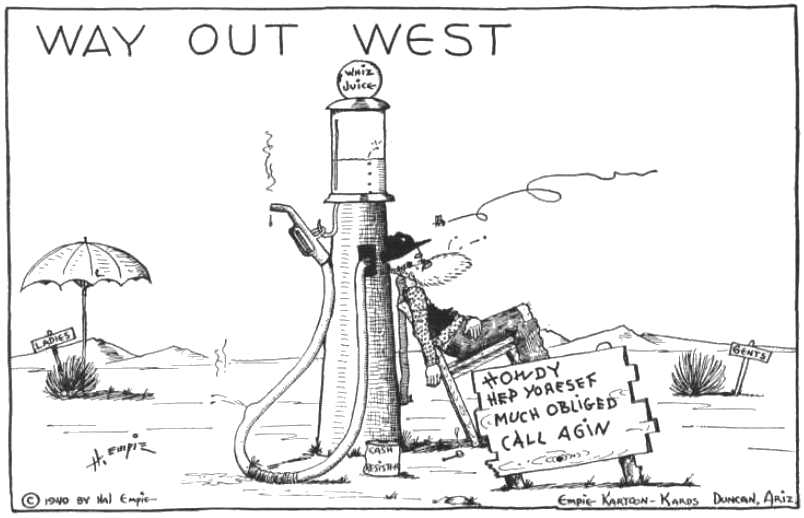
![]()
High Camp at Hilton Lakes
By Helen Gilbert
Desert Magazine - August 1966
![]()
The Mysterious Lake
By Marian Harvey
Desert Magazine - July/August 1967
![]()
Treasures of Owens Valley
By John Wardle Dixon
Desert Magazine - October 1967
![]()
Darwin, California
By Lambert Florin
Desert Magazine - November 1967
![]()
A Strange Story About ... The House on Ghost Mountain
By Myrtle Teague
Desert Magazine - December 1967
![]()

![]()
1968 January |
Cerro Gordo - 1868 - 1875 Located in Inyo County, 8 miles northeast of Keeler via a very steep dirt road. A military installation on top of two high points accounts for the road being maintained in good condition. Cerro Gordo, "Fat Hill," is so named because of the large quantity of silver ore which was mined there. Existing almost on the Inyo Range crest at 9,000 feet, the view from Cerro Gordo of Owens Valley far below and the Sierra Nevada Range on the western horizon is impressive. There are numerous remaining buildings, old foundations, and mine shafts. The aerial tramway which moved ore down to Keeler and supplies up to Cerro Gordo can still be seen in several canyons (most of the tramway was removed in 1959). Several ore buckets are still hanging, left just as they were when operations stopped many years ago. Because this is privately owned land, a visitor must be careful not to disturb either the buildings or the caretakers. The summit of nearby Cerro Gordo Peak affords a panoramic view of Death Valley, Eureka Valley, Saline Valley, Owens Valley, Panamint and Sierra Mountain ranges, and colorful Owens Dry Lake. |
Keeler - 1882l Located in Inyo County, it is 13 miles east of Lone Pine on State Highway 190. The site developed because of its central location, making it an important transportation center. A combination railroad, mining, and desert community, it offered a variety of services. Boats move between Keeler and Cartago on Owens Lake, carrying mining supplies, fuel for smelters, and silver bullion. Keeler was also the southern terminal of the Carson & Colorado Railroad; the tracks were just recently pulled up. The old yellow train station, long closed and without its tracks, stands next to the Cerro Gordo tramway house, which just recently lost its aerial cables and ore buckets. A gas station, old desert homes, and several inhabitants comprise Keeler today. Movie companies occasionally make use of the deserted buildings. Treasure hunters still visit the area, hunting for the fabled remains of a boat which sank during a storm while carrying a valuable load o silver bullion. |
| Darwin - 1874 - 1878 Located in Inyo County, it is easily reached by driving 6 miles south on the paved road which leaves State Highway 190 about 31 miles east of Lone Pine. Situated in Darwin Wash between the Coso and Argus Mountain ranges, it creates a serene and peaceful picture when first viewed. Its rich silver and lead deposits were discovered late in 1874, and within 1.5 years there were two smelters, twenty operating mines, and many stone structures housing the 1000 citizens. By 1876, its height of activity, there were five furnaces processing ore. When the large Defiance smelter shut down temporarily, an exodus began to other, more active mining camps. Darwin has led an up and down existence, last ending when the Anaconda Copper Company officially ended its operations in the early fifties. Many buildings, foundations, and badly scarred hillsides are present to greet the explorer. A well preserved "boothill" can be visited to the west of town. A post office still operates, giving service to the few remaining inhabitants and prospectors. Darwin Falls s a surprising feature found deep within the arid Death Valley region and is a perennial flow of cool, unpolluted water. A 20-foot waterfall is created in Darwin Wash where the underground flow of water is forced to the surface by rock dikes. Reached via a graded dirt road from either Panamint Springs or Darwin, a short trail can be hiked to the base of the falls. An old Chinese vegetable garden was tended here many years ago and some celery, wild now, still grows. Today the falls supplies water for a motel, cafe, and gas station located at Panamint Springs on State Highway 190. |
||
![]()
Again Rises Darwin
By Elizabeth Beebe
Desert Magazine - September 1968
![]()
Sierra Siesta for a Slim Princess
By John Gleichman
Desert Magazine - July 1969
![]()
Dirty Sock and Beyond
By Roberta M. Starry
Desert Magazine - November 1970
![]()
The Saga of the Bessie Brady
By Al Millspaugh
Desert Magazine - July 1971
![]()
1971 September |
Inyo - Gil's Oasis There is always a feeling of nostalgia and deep regret when another desert landmark falls to the progress of civilization. Gil's Oasis on U.S. 395, seven miles north of Little Lake, has been razed to clear the route for freeway construction. Gil's was not a pretentious place but on a warm summer day it was a pleasant stop for a cool drink or lunch under the shady elms. |
Inyo - Charcoal Kilns Members of the Eastern California Museum Association have erected a shelter to protect the eroding Cottonwood Creek Charcoal Kilns (see the June 1971 issue of Desert Magazine). The Museum Association is very active in preserving historical sites in the Owens Valley. The kilns are located a mile east of U.S. 395, seven miles north of Cartago. A marker and sign identify the road. |
![]()
Owenyo - Where the Narrow Gauge Met the Standard
By Mary Frances Strong
Desert Magazine - July 1972
![]()
Mono Mills to Bodie
By Robert C. Likes
Desert Magazine - December 1972
![]()
Mono's Volcanic Islands
By Betty Shannon
Desert Magazine - July 1973
![]()
California's Alabama Hills
By Gary Richardson
Desert Magazine - September 1973
![]()
Desert Mirage
By Helen Walker
Desert Magazine - November 1974
![]()
So ... What's a Navajo Taco?
By Mildred Hooper
Desert Magazine - April 1975
![]()
Mono's Volcanic Wonderland
By Mary Frances Strong
Desert Magazine - June 1976
![]()

![]()
East of Independence
By Mary Frances Strong
Desert Magazine - September 1976
![]()
Desert Ghosts - Darwin, California
By Howard Neal
Desert Magazine - November 1976
![]()
New Life on Ghost Mountain
By Ernie Cowan
Desert Magazine - April 1977
![]()
Owens Lake Loop Trail
By Mary Frances Strong
Desert Magazine - July 1978
![]()
The Mono Pass - Bloody Canyon Trail
By Betty Shannon
Desert Magazine - November 1978
![]()
Darwin ... and the People Who Built It
By Annis M. Cuppett
Desert Magazine - March 1979
![]()
Cerro Gordo
By Annis M. Cuppett
Desert Magazine - February 1980
![]()
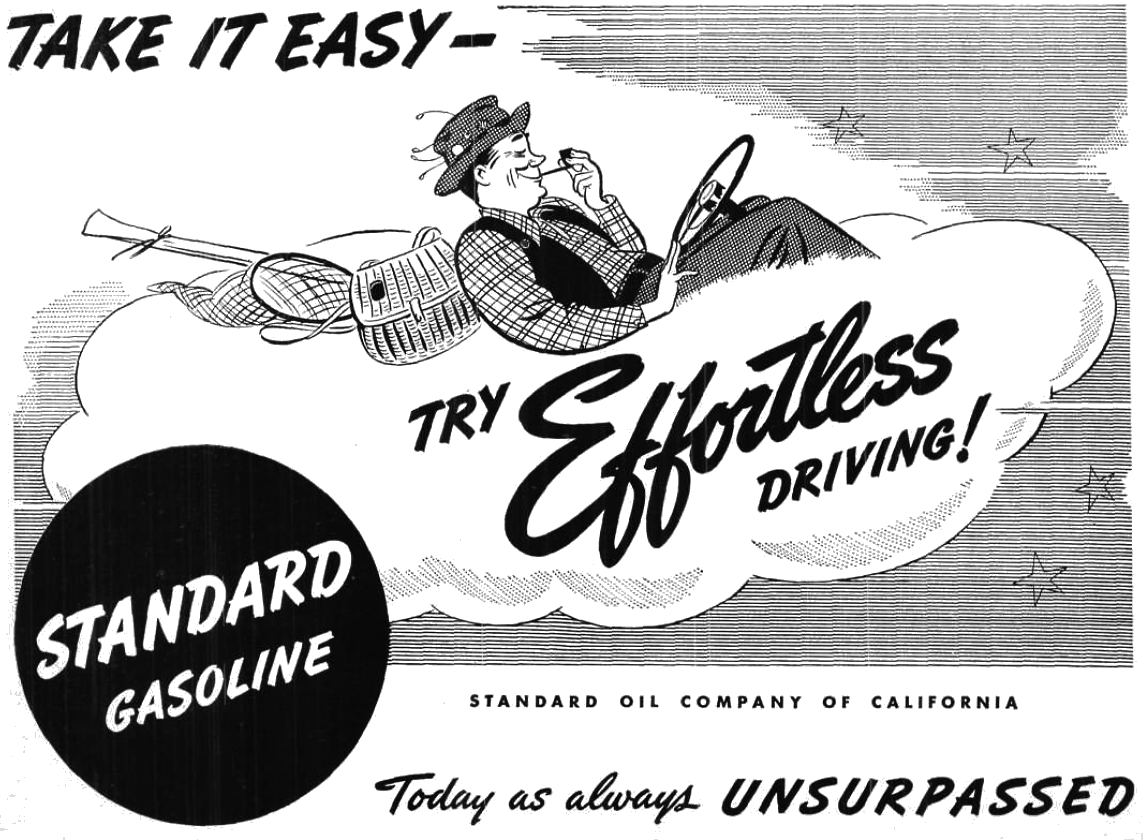 |
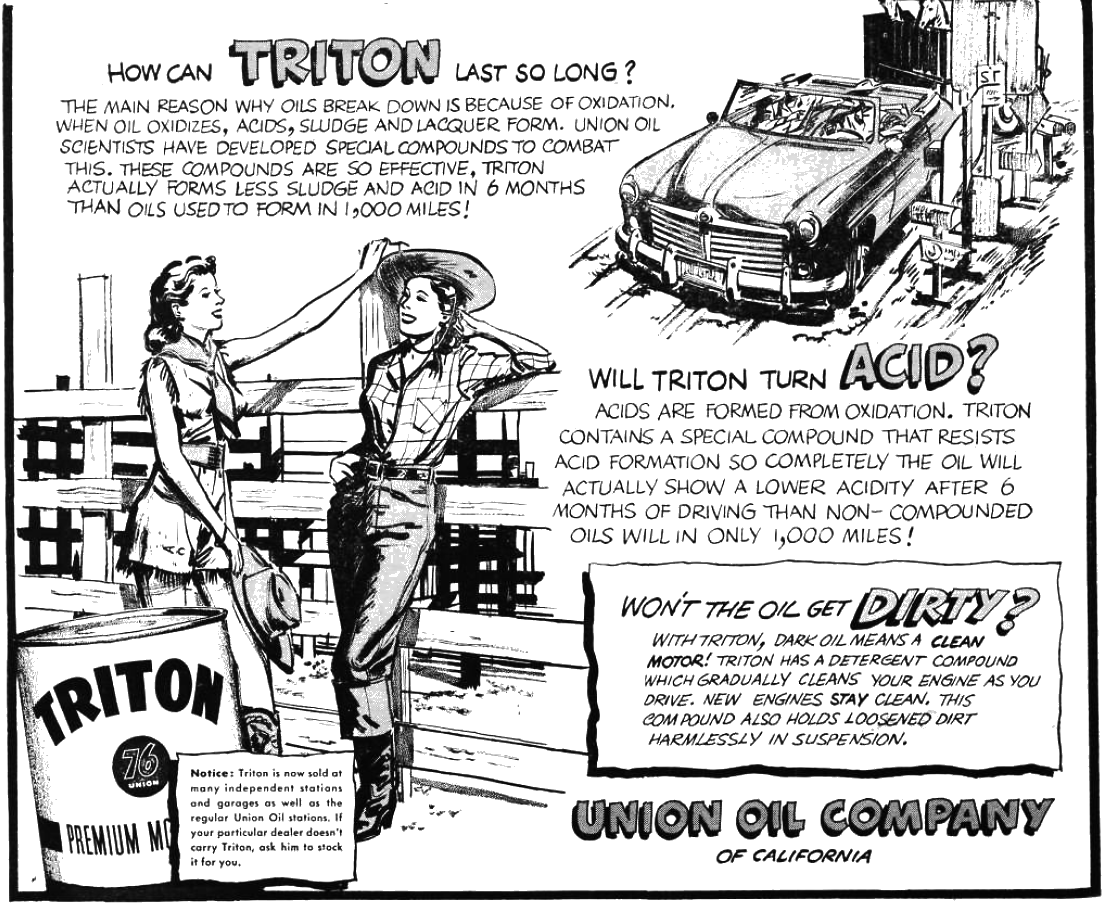 |
![]()
1981 February |
Owens Valley - Elk Transplant Successful A total of 102 tule elk were captured in the Owens Valley of Inyo County and transported to augment three existing herds in central and northern California. Twenty-two elk were taken from the Tinemaha herd and moved to Mt. Hamilton in Santa Clara County. Lake Pillsbury's existing herd in Lake County received 58 of the tule elk and the remaining 22 found new homes at Laytonville in Mendocino County. The California Department of Fish and Game operation used a new herding technique on elk for the first time, a technique in which a helicopter herded the animals into an enclosure and in which the use of tranquilizing darts was held to a minimum. |
1981 July |
Owens Lake - New Solar Pond Power Plant Construction of the nation's first solar salt-pond power plant to generate electricity for customers of the Los Angeles Department of Water and Power is contingent upon $2 million in state funding and successful studies of the project's Owens Lake site, locate 200 miles north of Los Angeles. Development of the $2.5 million Owens Lake Solar Pond Power Plant will be a cooperative venture of the DWP, California State Lands Commission and Inyo County. The plant is designed to generate electricity using the sun's heat collected by a highly saline, 15-acre pond. The plant will produce 1.12 million kilowatt hours annually of clean, renewable electricity for Los Angeles, and save burning about 1,760 barrels of oil annually. The Owens Lake plant would use a salt-gradient solar pond to collect and store the sun's heat at the bottom of an 11.5 foot-deep pond. Solar energy stored in the heavier saline water at the pond bottom will reach 185 to 212 degrees before it is pumped to a heat exchanger, where it evaporates the working fluid, which is Freon. The pressurized vapor then flows through the turbine, turning the generator to produce enough power for more than 200 DWP residential customers. To complete the cycle, the vapor is cooled in a condenser using cool, fresh water from the pond surface. Both the hot brine and cooling water are returned to the pond to complete the cycle. Between the cool water at the pond surface and hot brine in the pond's depths is a non-convective layer of saline water which insulates the hot brine later from the cooler pond surface. Because of the massive heat retention capability of a solar pond, the plant will be able to operate during nights and cloudy days without loss of generation. |
![]()
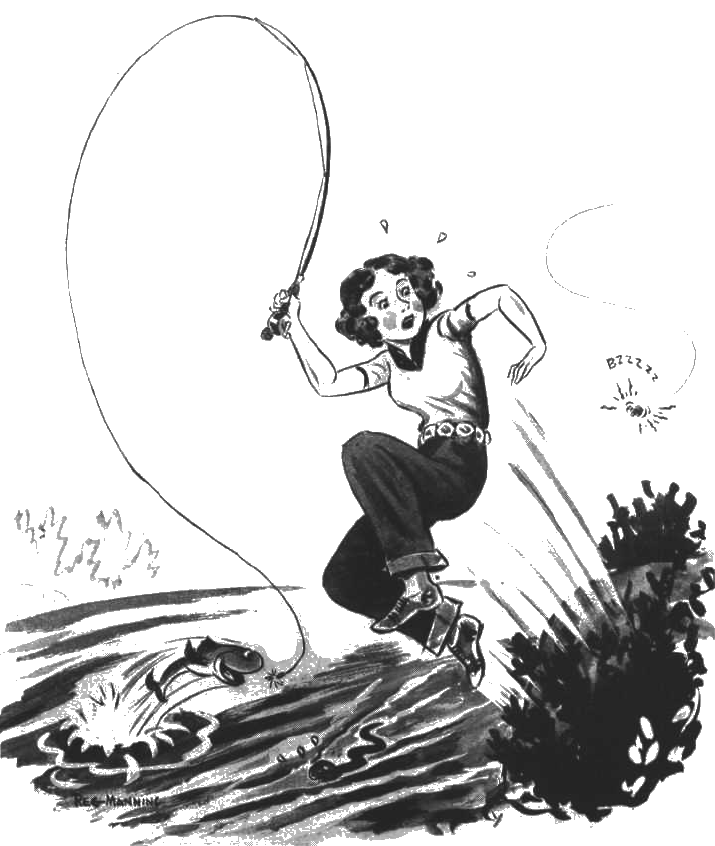
![]()
Why Owens Lake is Red
By Wayne P. Armstrong
Desert Magazine - May 1981
![]()
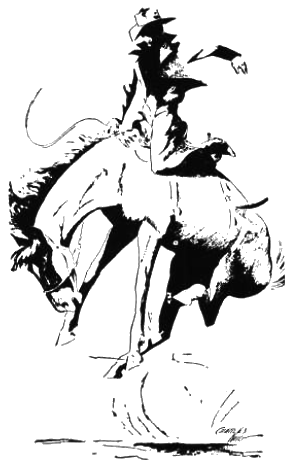
![]()
1983 December |
Lee Vining - Mono Lake in Dispute No accord has been reached regarding the water in Mono Lake. Los Angeles uses its water for domestic purposes. The lake covers 60 square miles, has no natural outlet, and, due to a decreasing volume of water has become 2 1/2 times as salty as the Pacific Ocean. Yet, Mono Lake contains a teeming population of rare brine shrimp, which supports a large bird population. The lake is the main nesting area of the California Gull ad a resting place for some 70 other species of birds who stop there on their annual migrations. The islands used for nesting are in danger of becoming accessible by land due to the drying of the lake. If that happens, animals such as coyotes and wolves can walk out to the island and feed upon the nesting gulls. Los Angeles Department of Water and Power and other parties are attempting to arrive at a solution to the problem. |
![]()
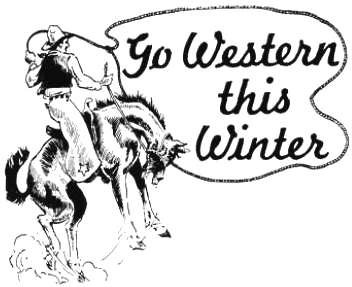
![]()
1984 November |
Little Lake - Coso Mining Camp A small mining camp active in 1860 to 1862. Was located south of Darwin. Coso is the Indian name for "fire" or "burnt." The area is volcanic in nature. The site of this silver camp is now restricted as it is within the boundaries of the Naval Weapons Center |
Darwin - Semi-Ghost Town Darwin is a semi-ghost town located 24 miles southeast of Keeler. Named for Dr. Darwin French who discovered deposits of silver and lead in the area. The town was founded in 1875, but the mining activity began around 1860. Access to Darwin is by paved road off of Highway 190. Many ruins remain in the area, however claims and mines are active and some buildings are occupied. |
Cerro Gordo - Inyo Mountains A ghost town in the Inyo Mountains 10 miles east of Keeler. The town is somewhat preserved and worth visiting. The name is Spanish for "Fat Hill," so referred to because the location was "fat" with silver ore. The riches from here helped to build the City of Los Angeles as much as did Comstock silver for San Francisco. Cerro Gordo was the home for Mortimer Belshaw, a mine owner and merchant. Remi Nadeau was active in freighting for Cerro Gordo. It is estimated that over $20,000,000 in silver was produced here, at a time when silver sold for under a dollar an ounce. The town was active from 1860 to 1895, with periodic revivals. Ruins of a tramway built to transport ore from Cerro Gordo to the railhead at Keeler are still visible. Elevation of the townsite is almost 9,000 feet above sea level. |
![]()
The Fat Cat From Fat Hill Gets Skinned
Tiburcio Vasquez and the Coyote Hole Stage Station Robbery
By Bryon Harrington
Desert Magazine - Spring 2012
![]()
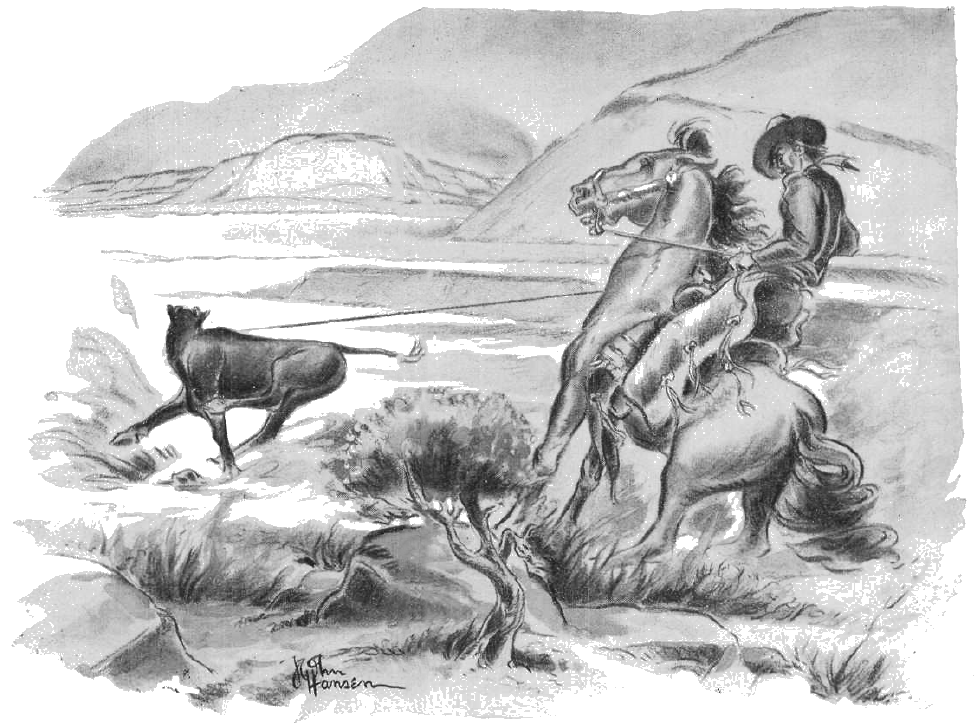
![]()
Further Reading |
| Owens Valley Sheep - Alfred R. Giraud | ||
| Bob Swandt - High Sierra Cowboy and MWPT Packer | ||
| Pearsonville | ||
More Owens Valley / Desert News |
||
Life in Owens Valley - Rena "Beth" Moore-Smith |
||
Olancha Remembered |
||
Bob White & Tunnel Airfield |
Sign Guestbook View Old Guest Book Entries Oct 1999 - Feb 2015 (MS Word) |
 CONTACT the Pigmy Packer |
View Guestbook View Old Guest Book Entries Oct 1999 - Feb 2015 (PDF) |

